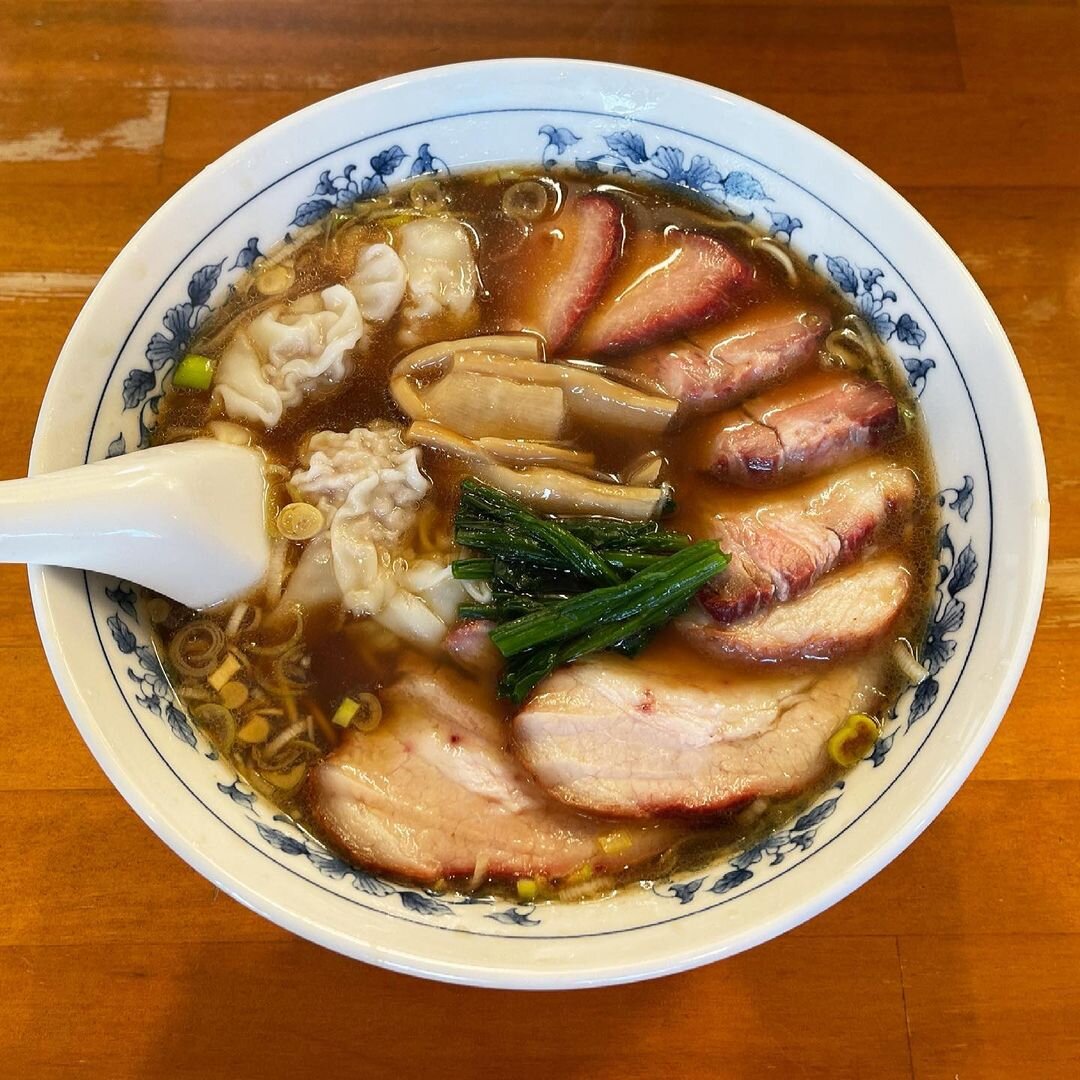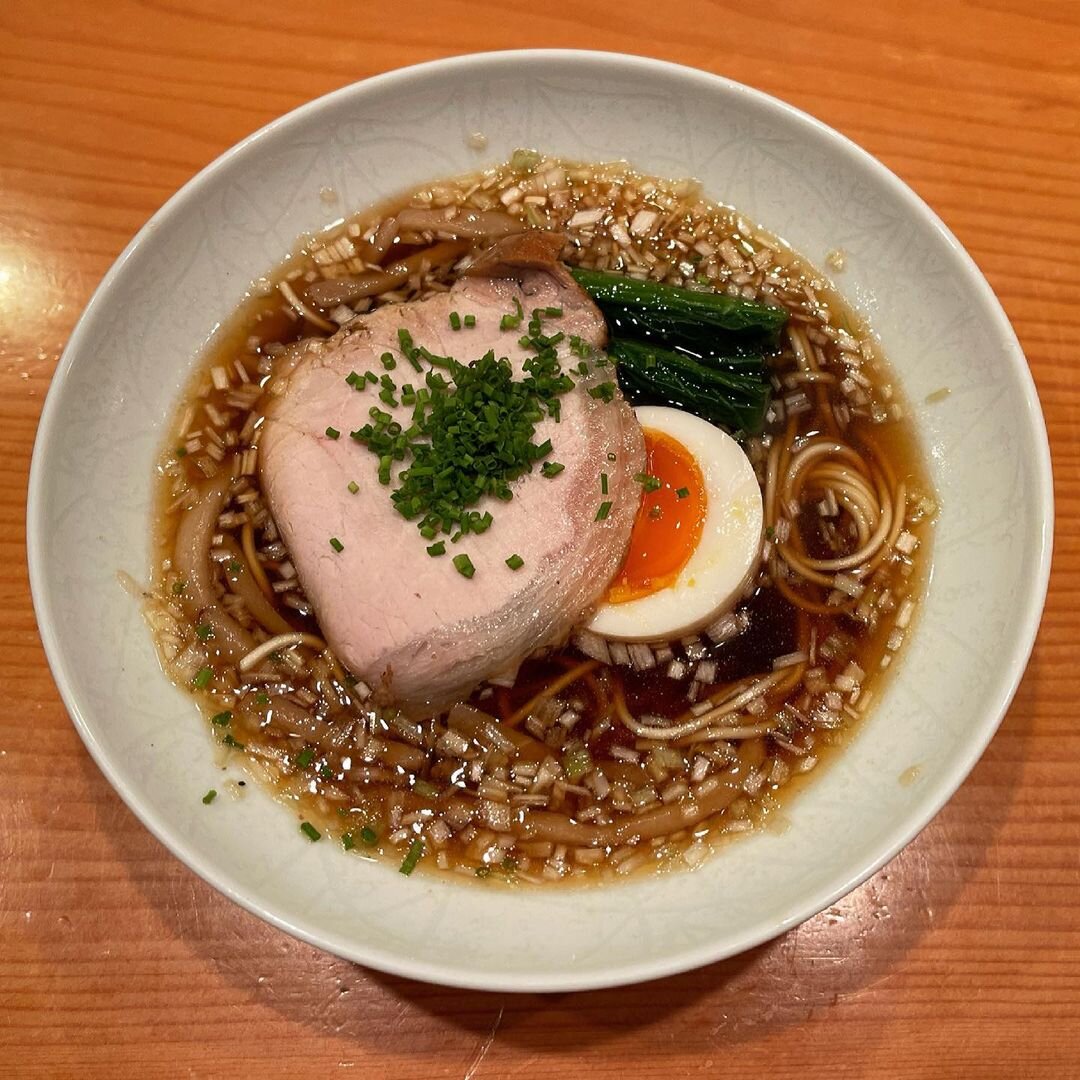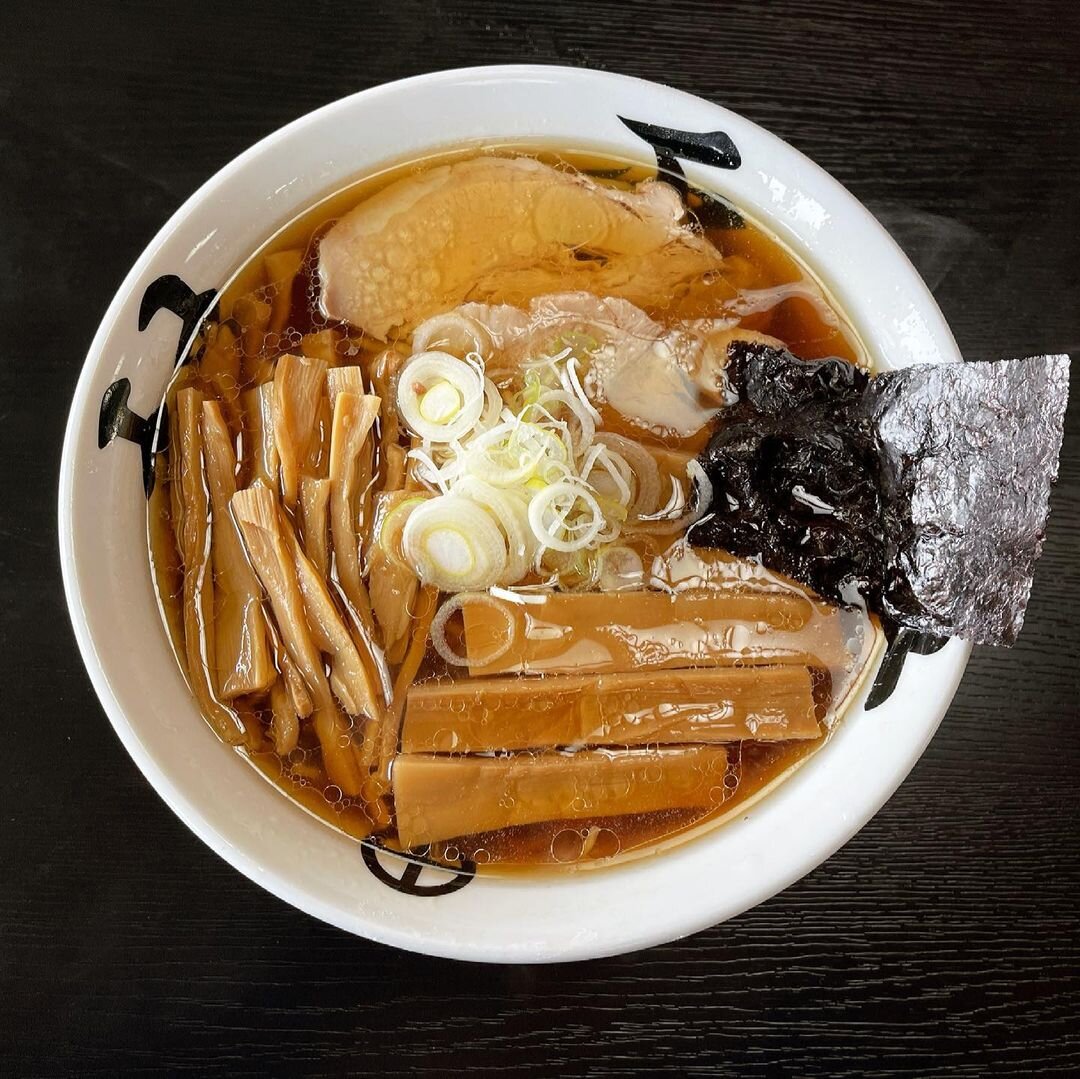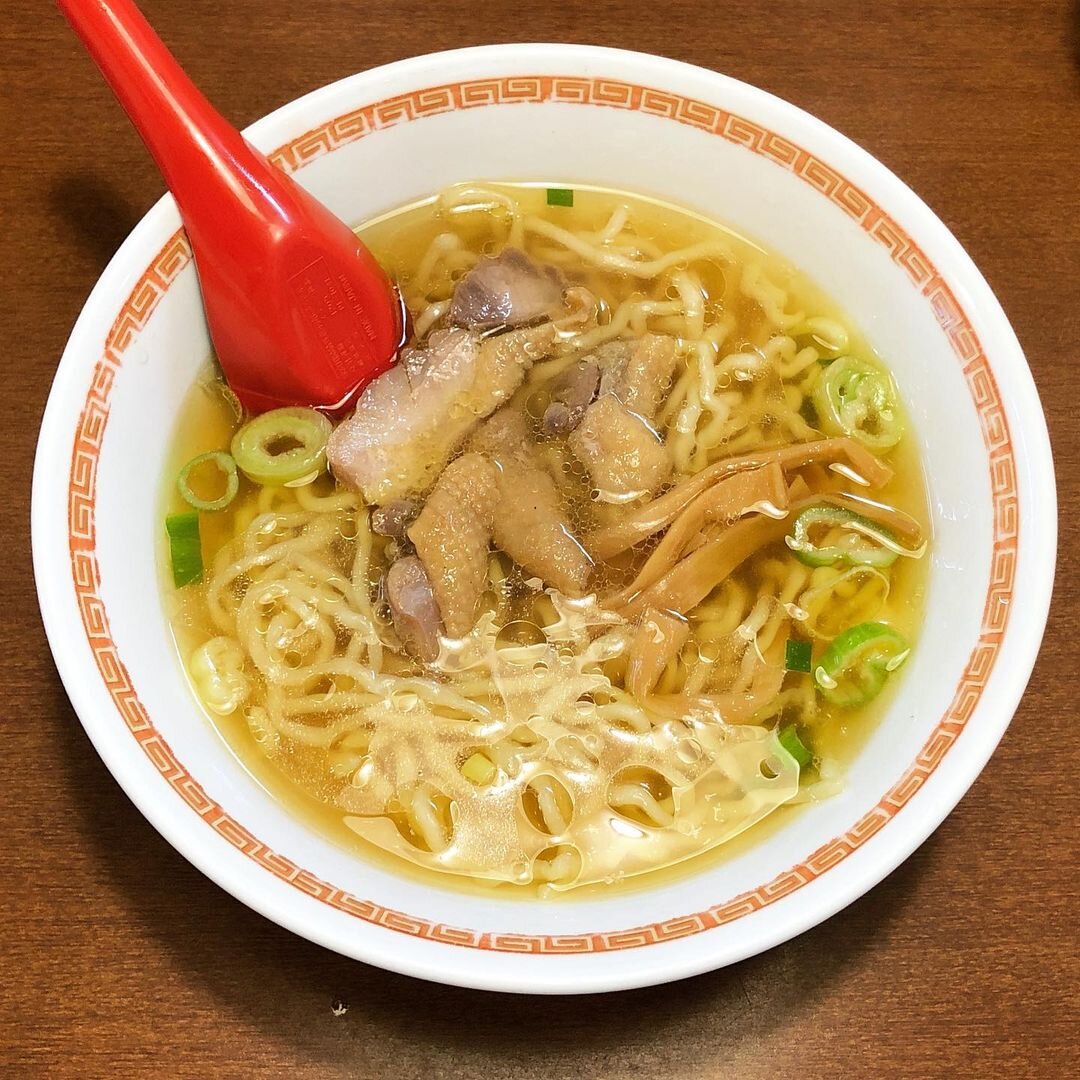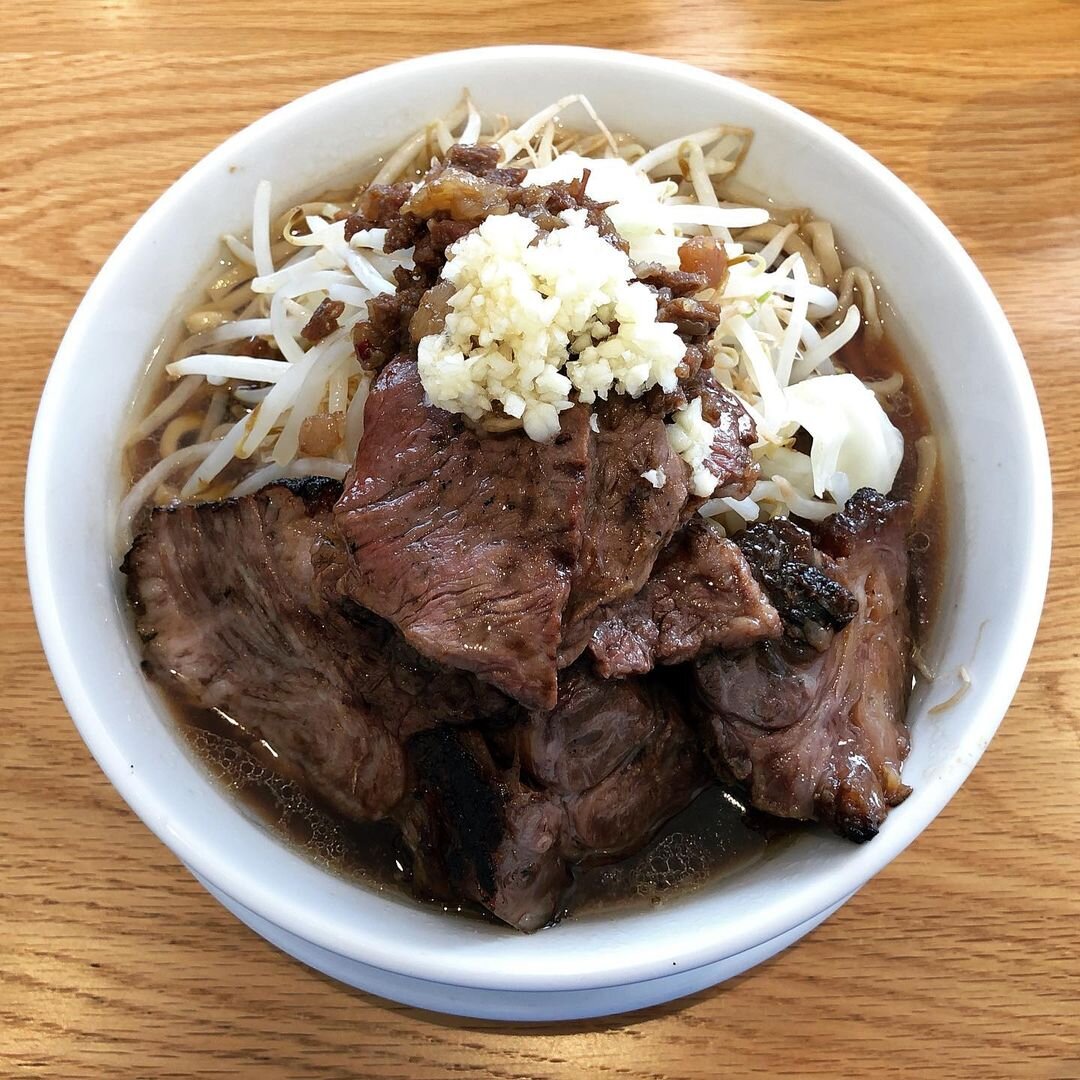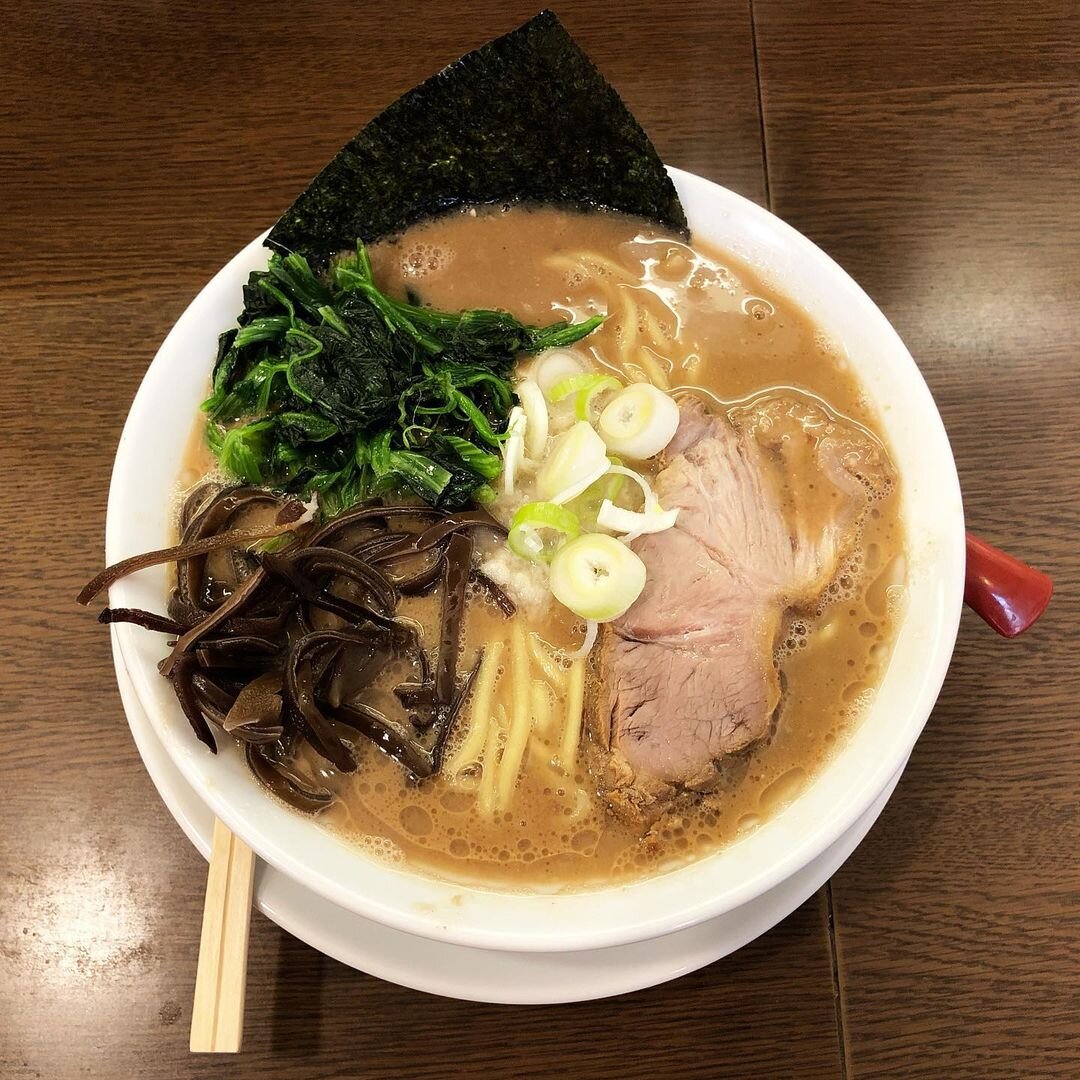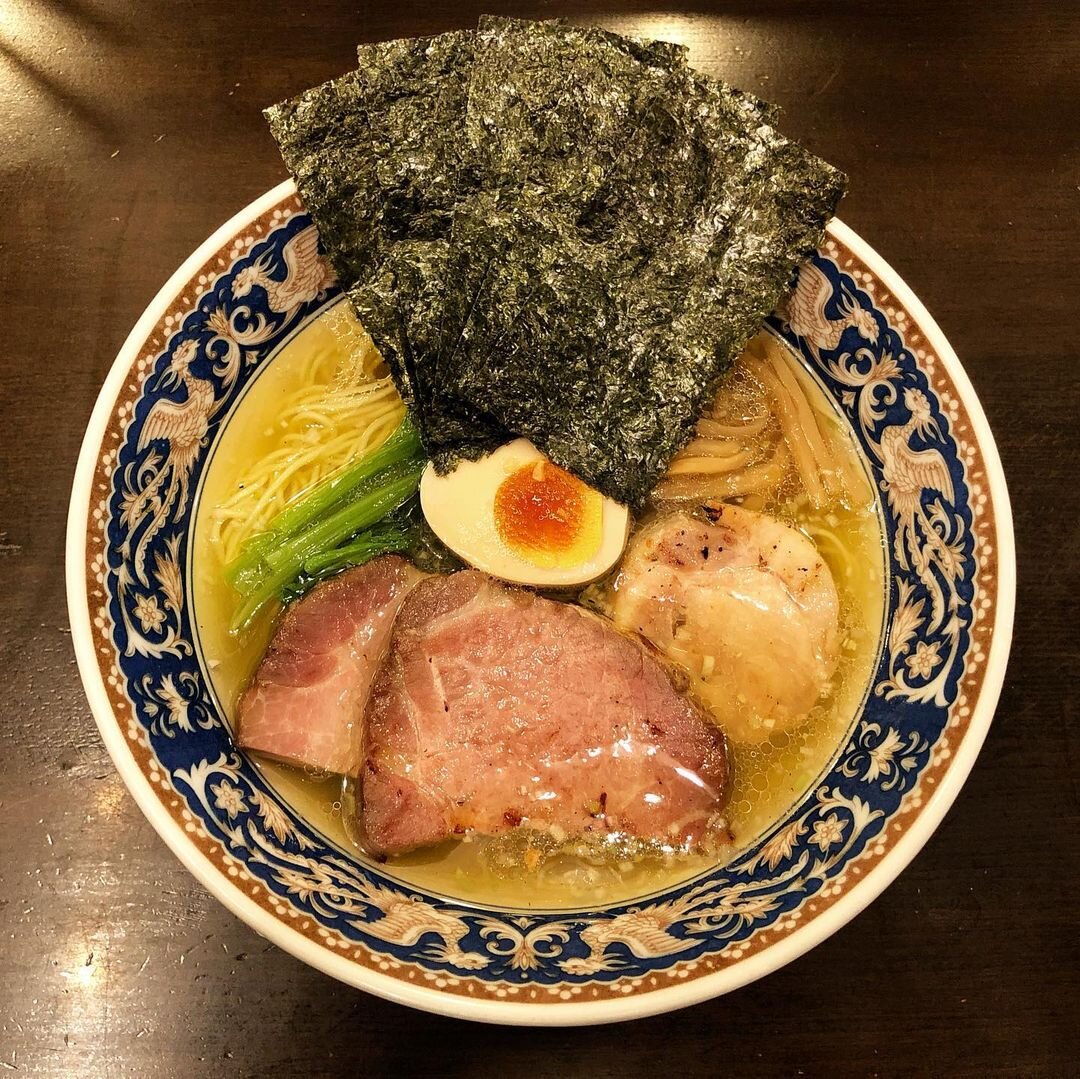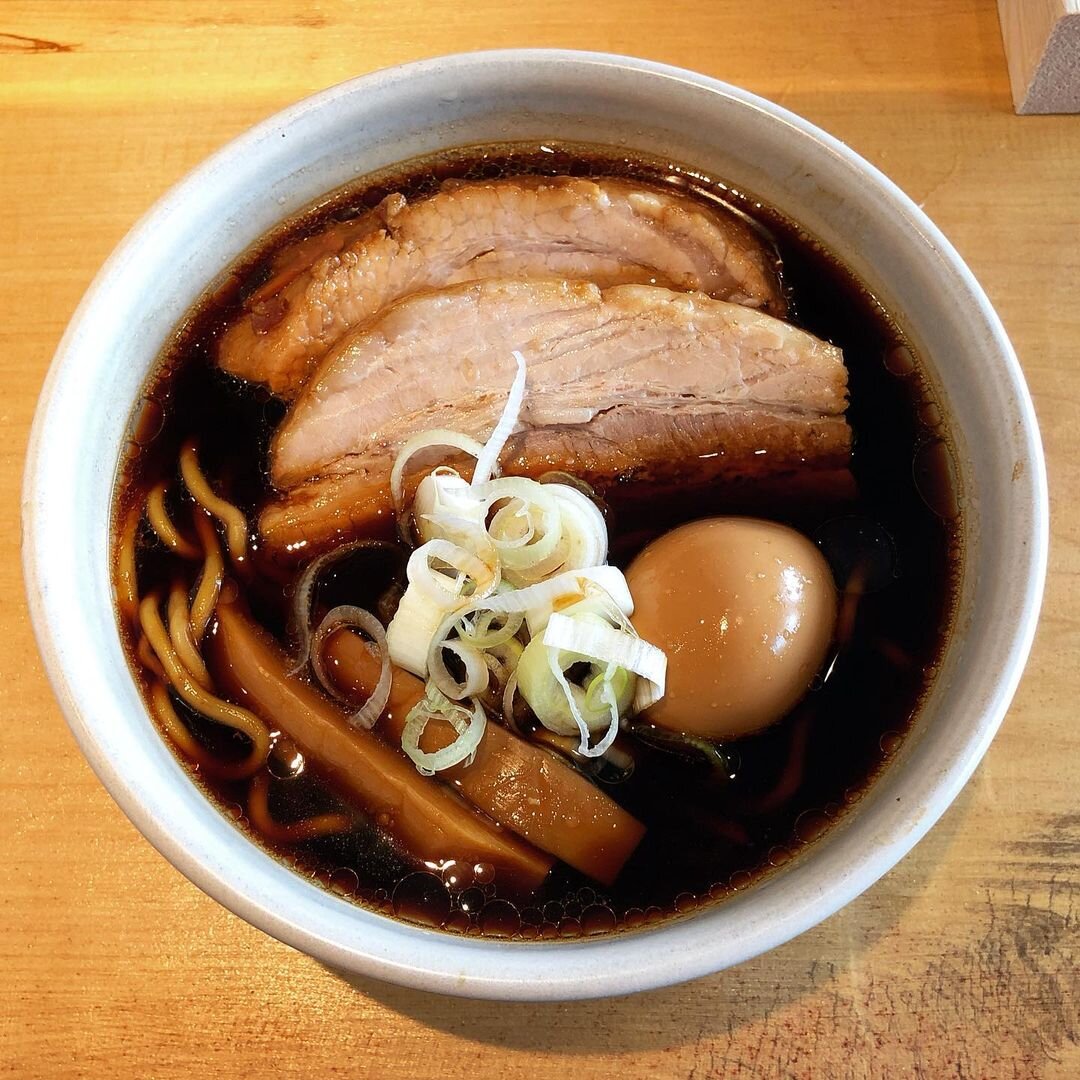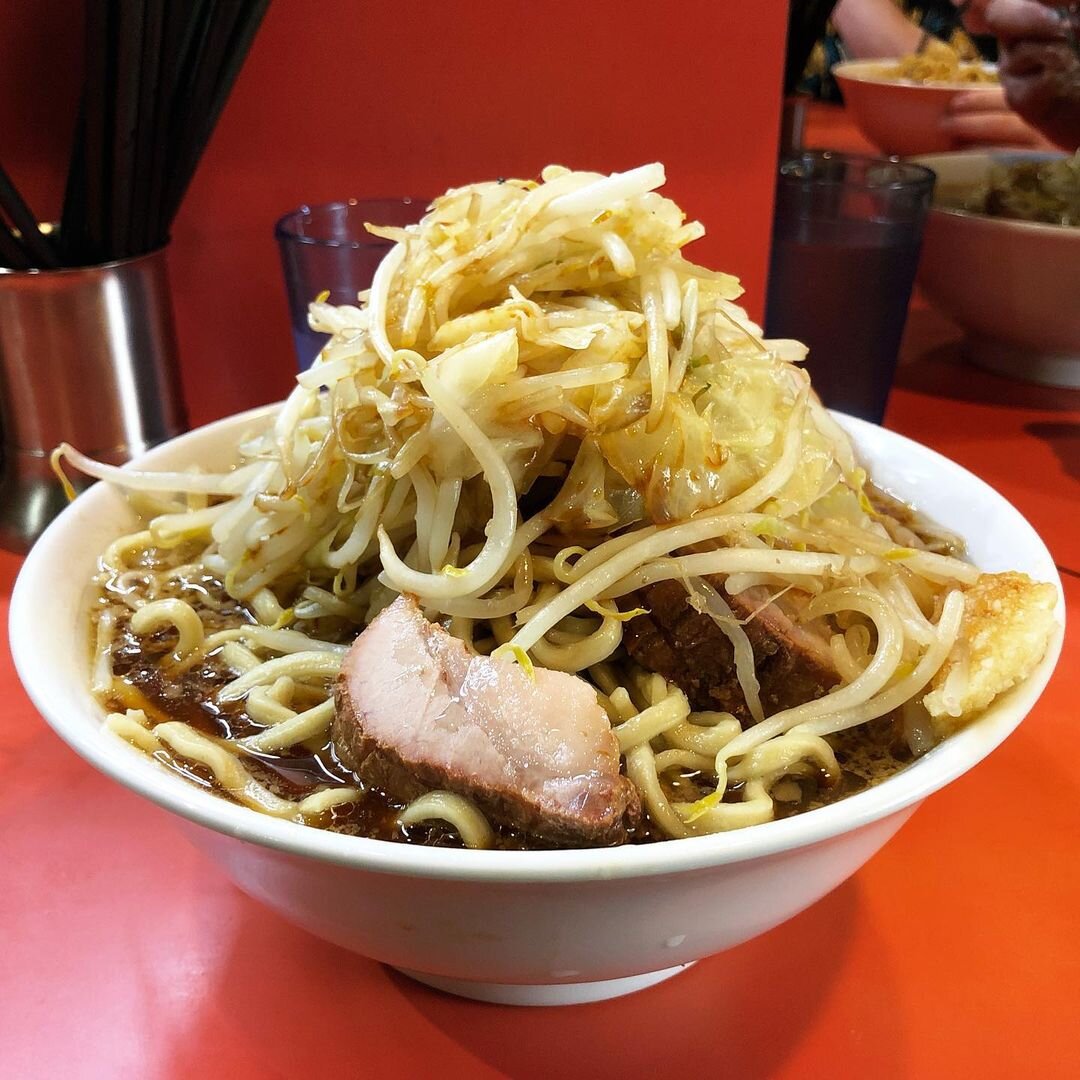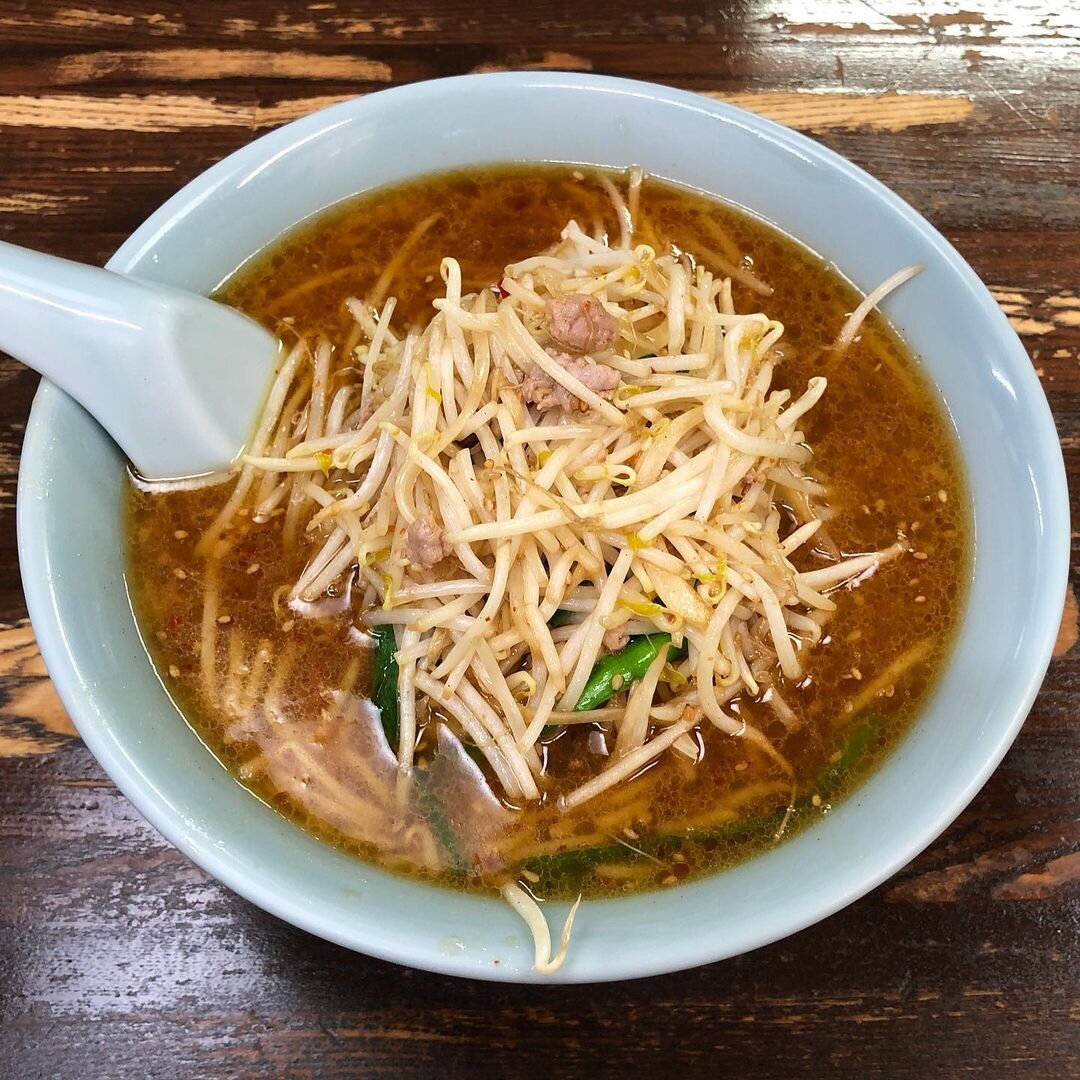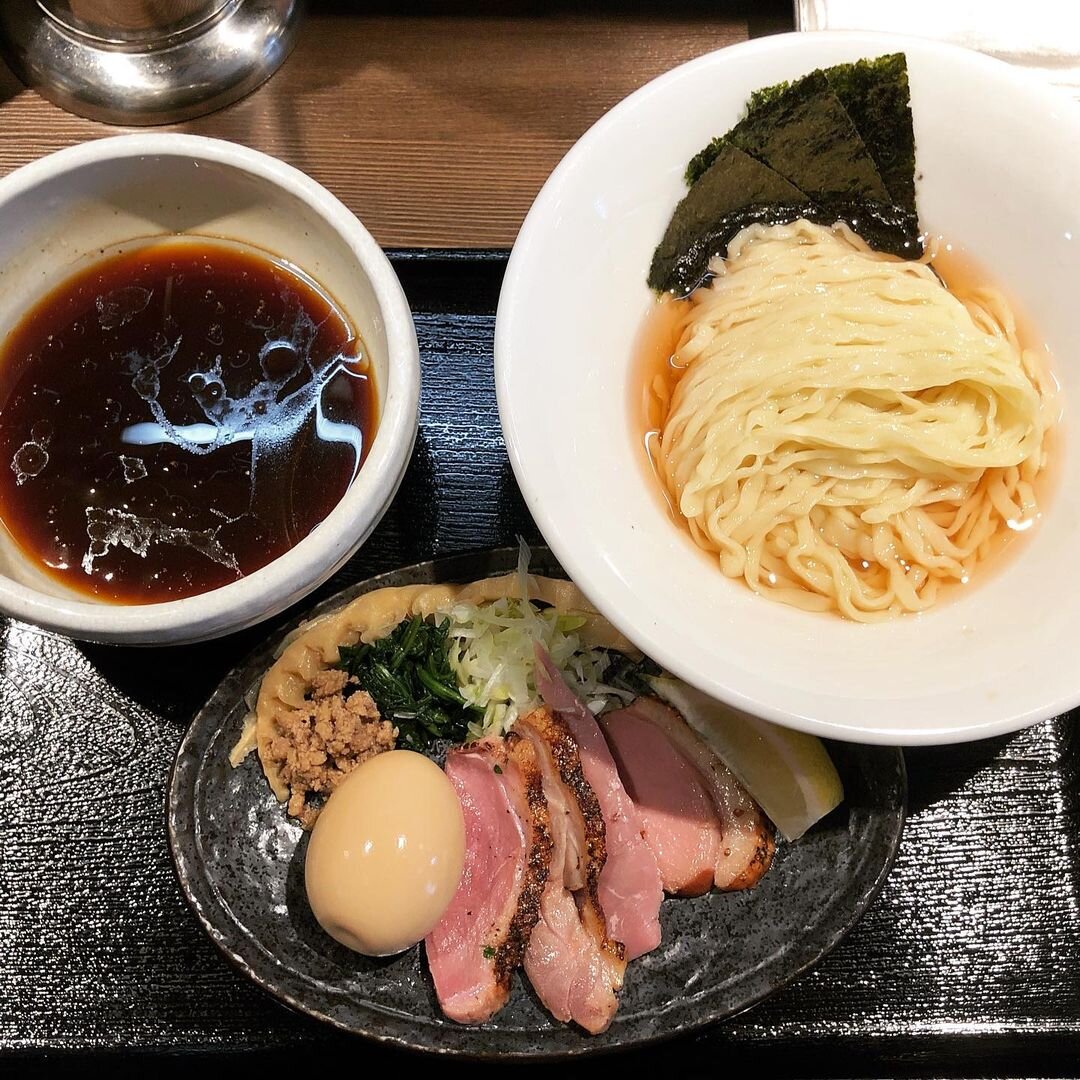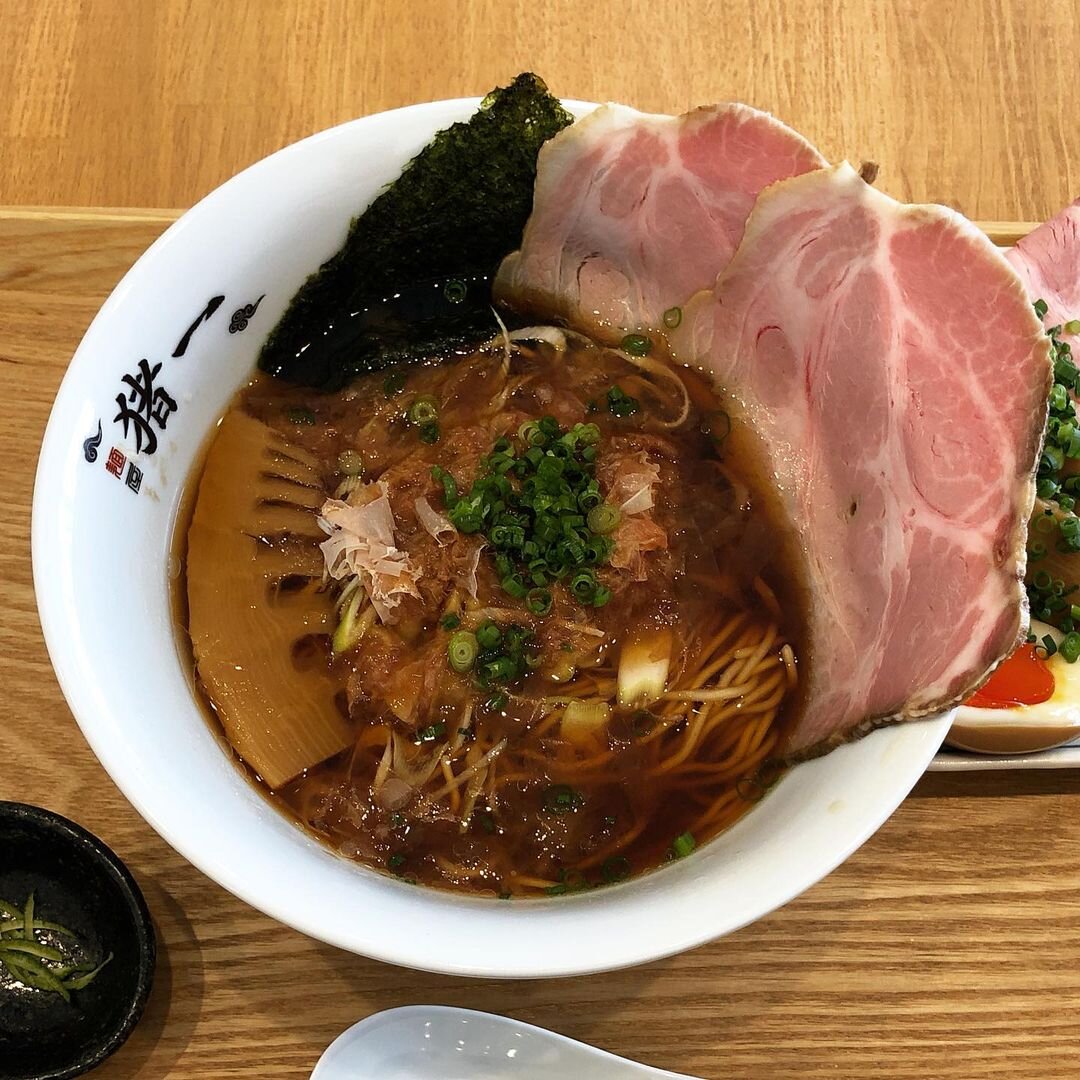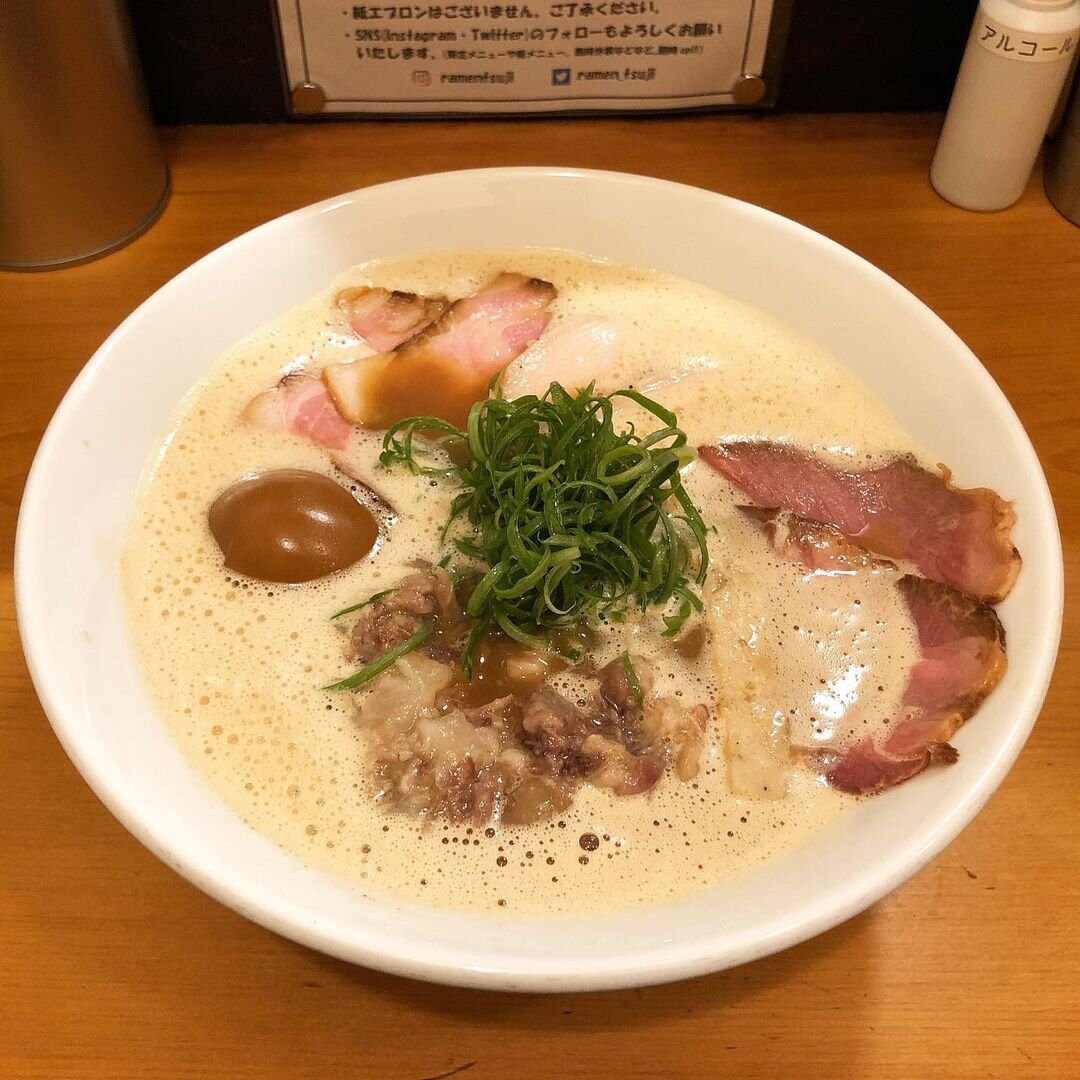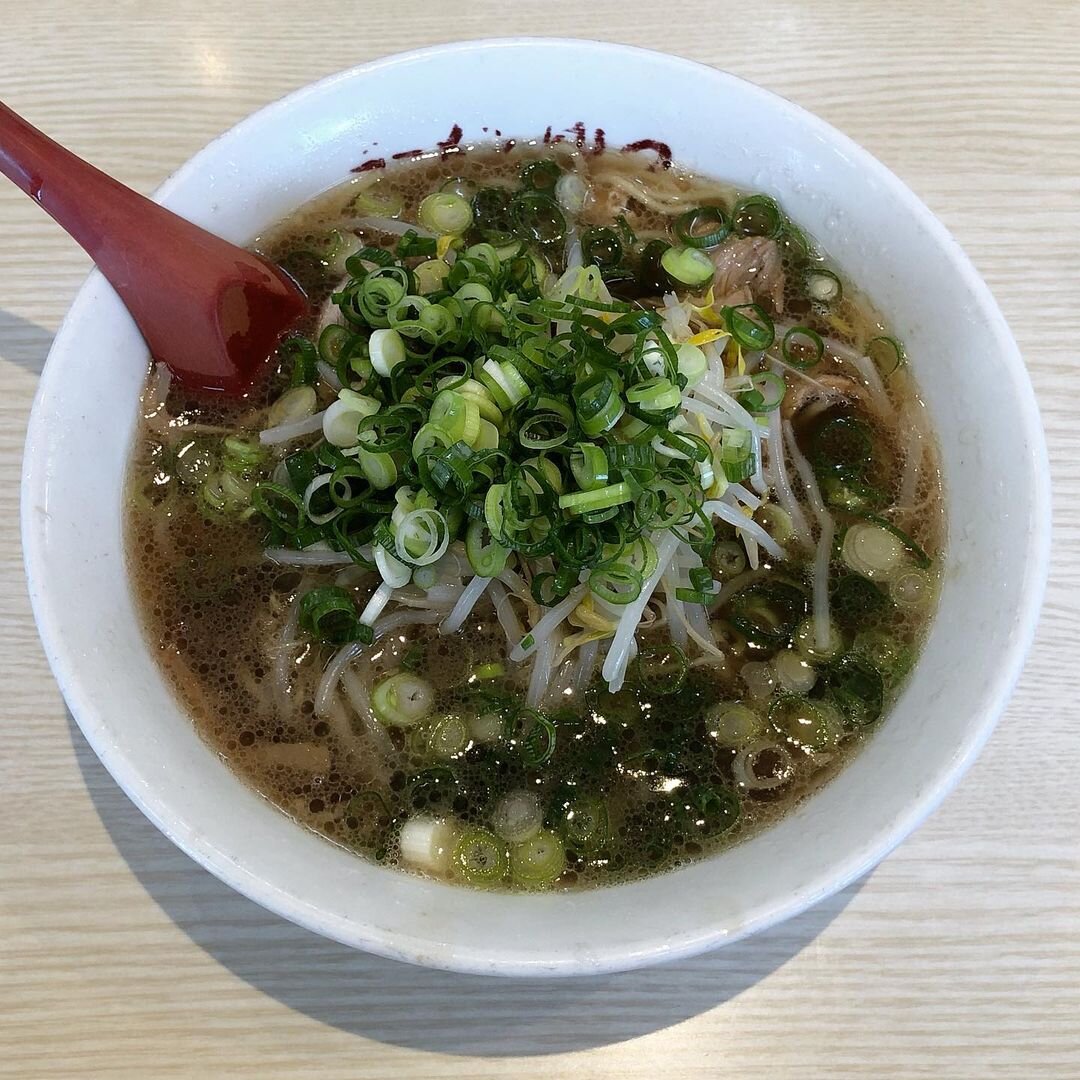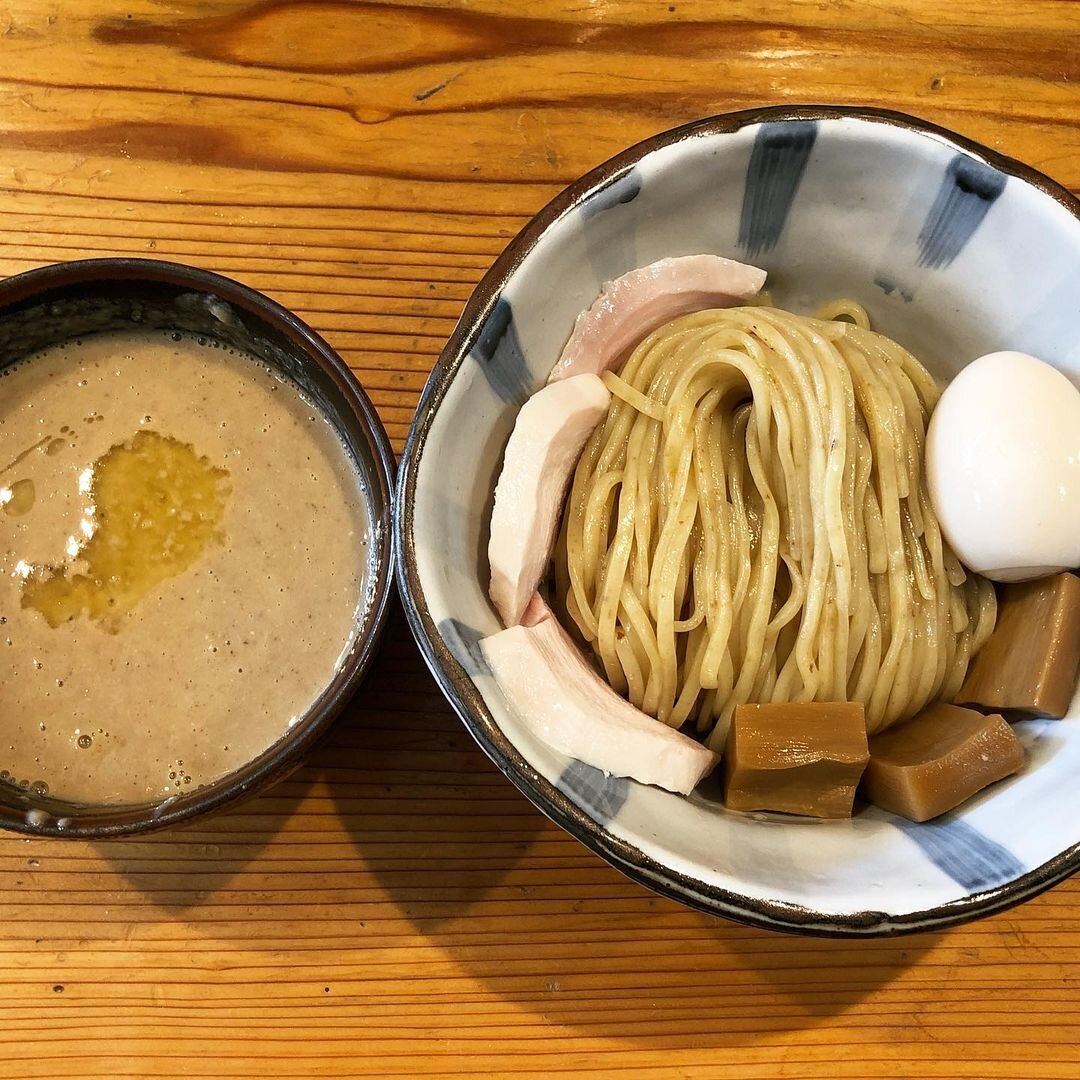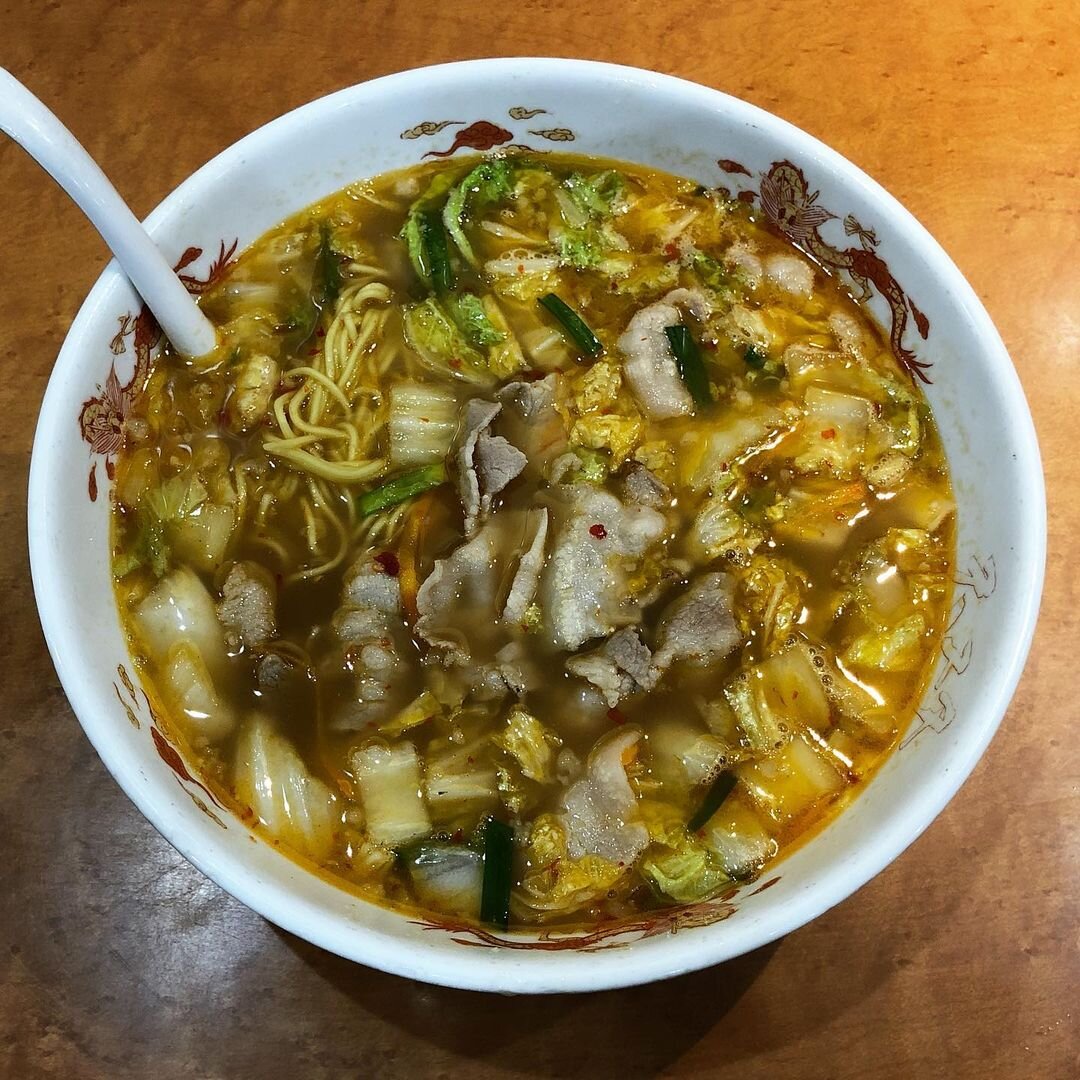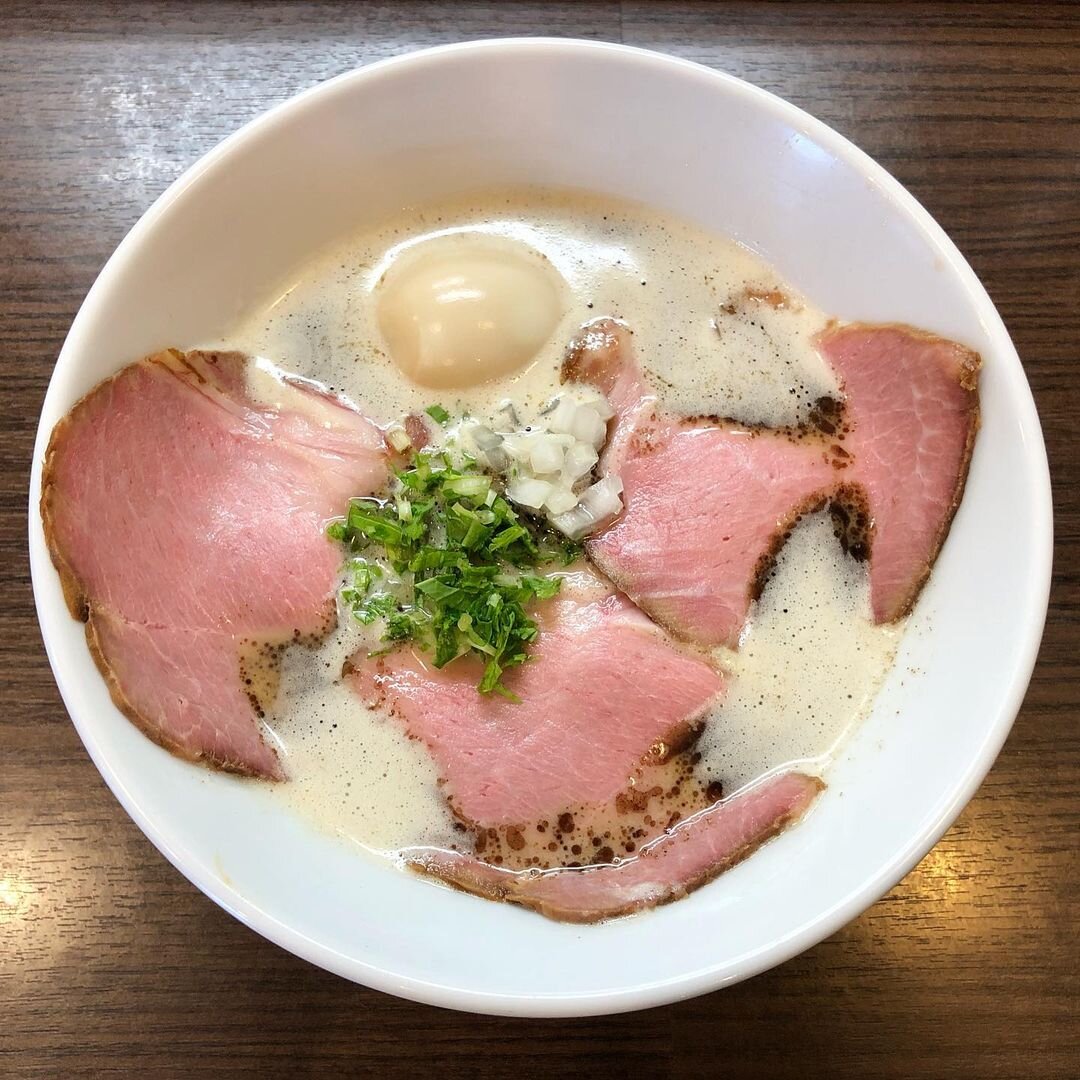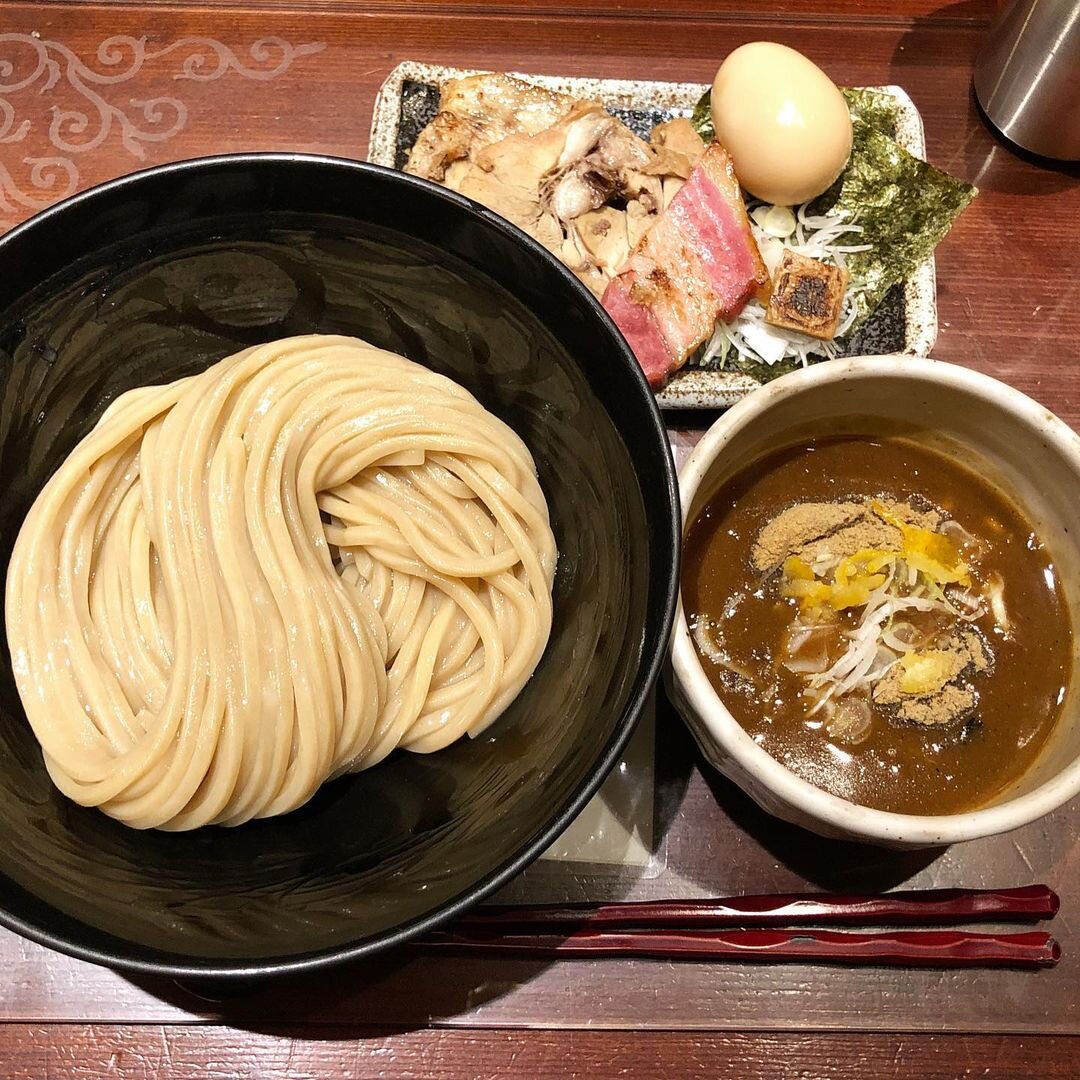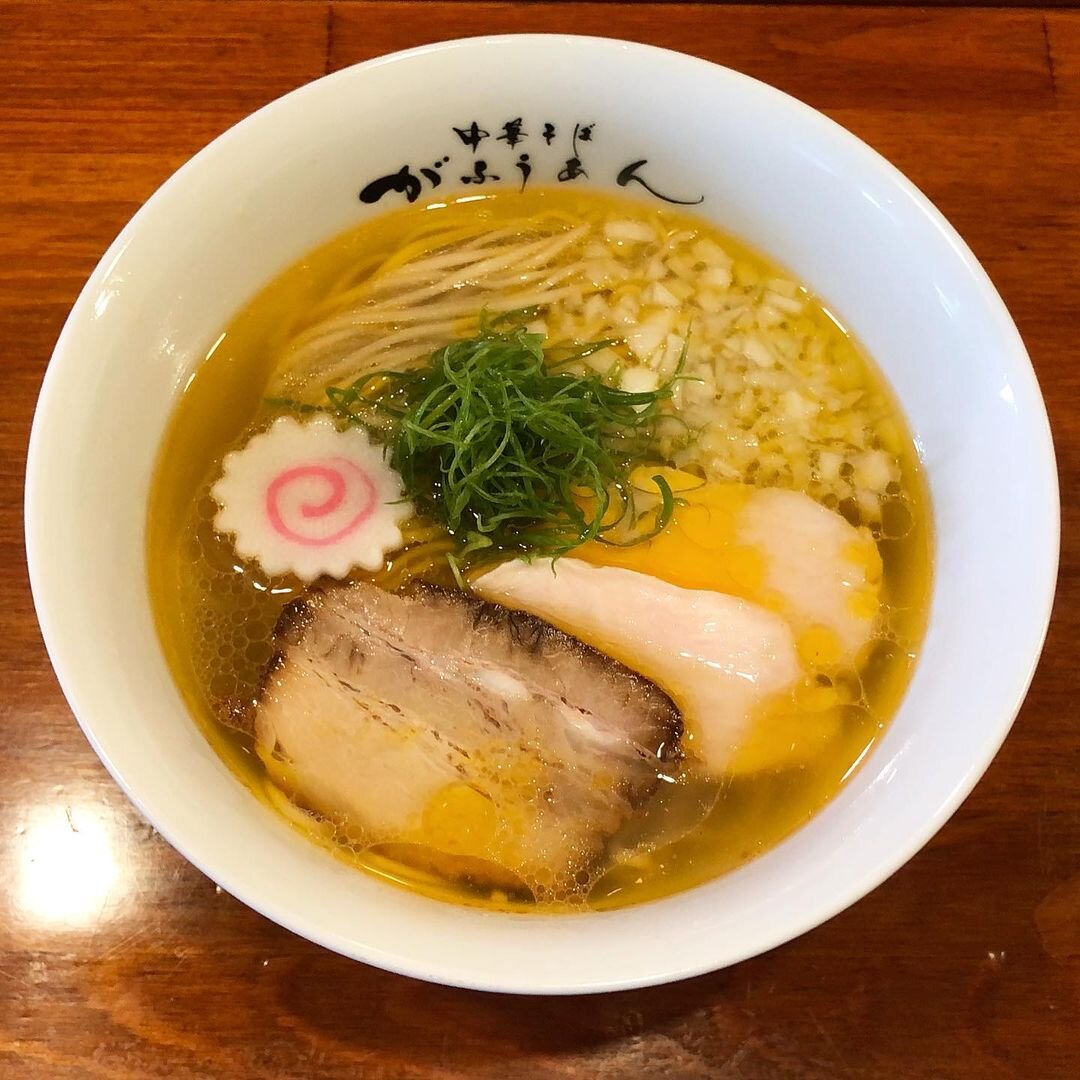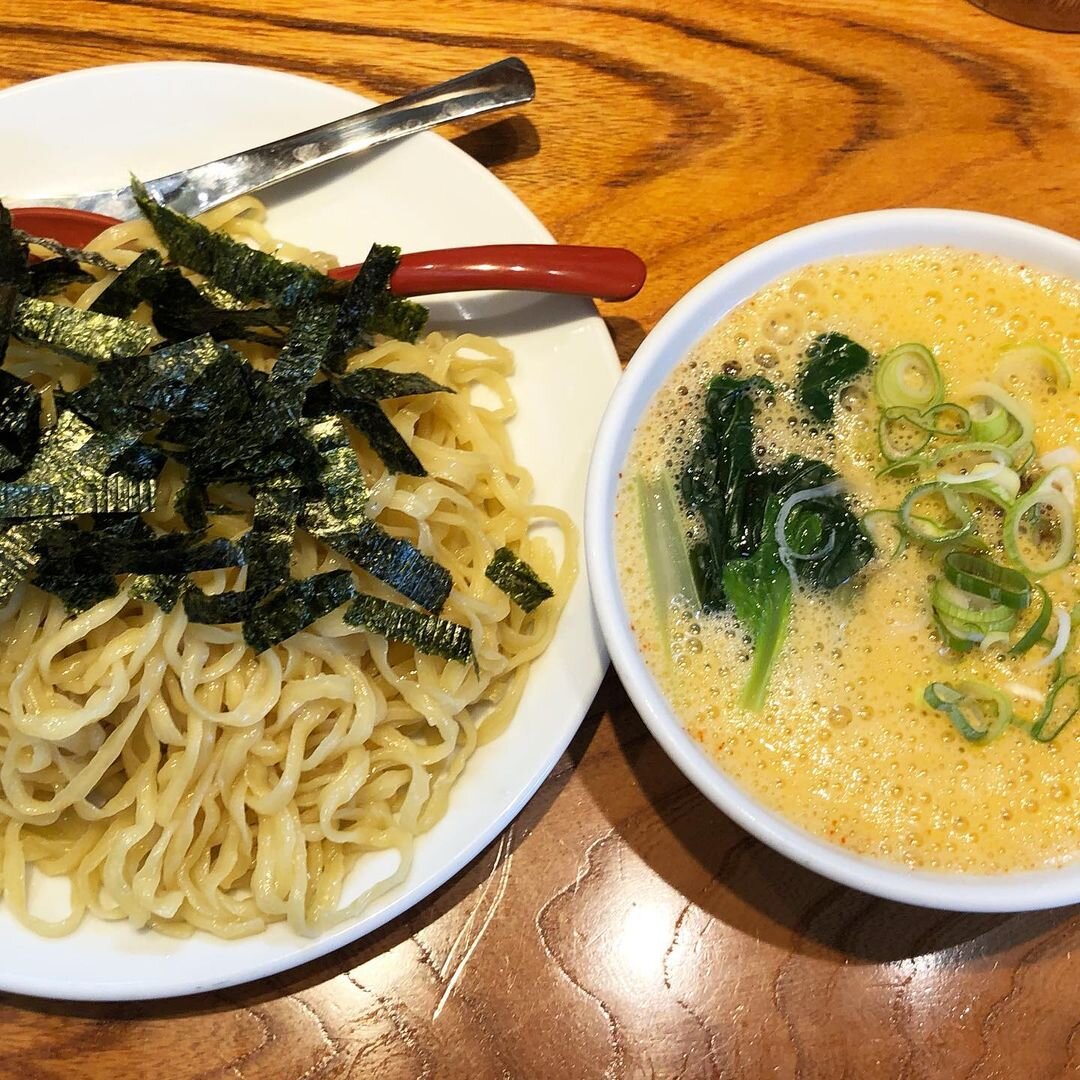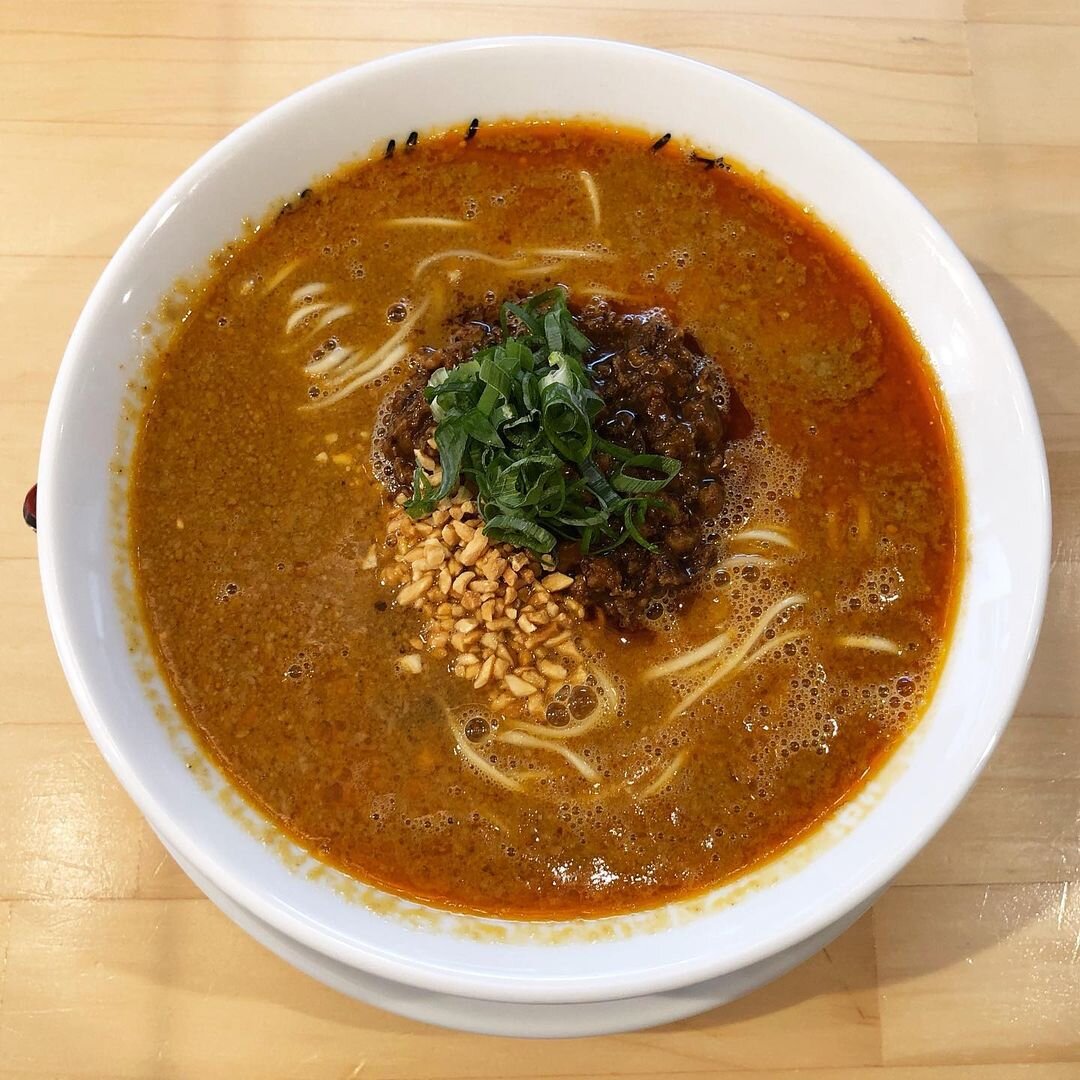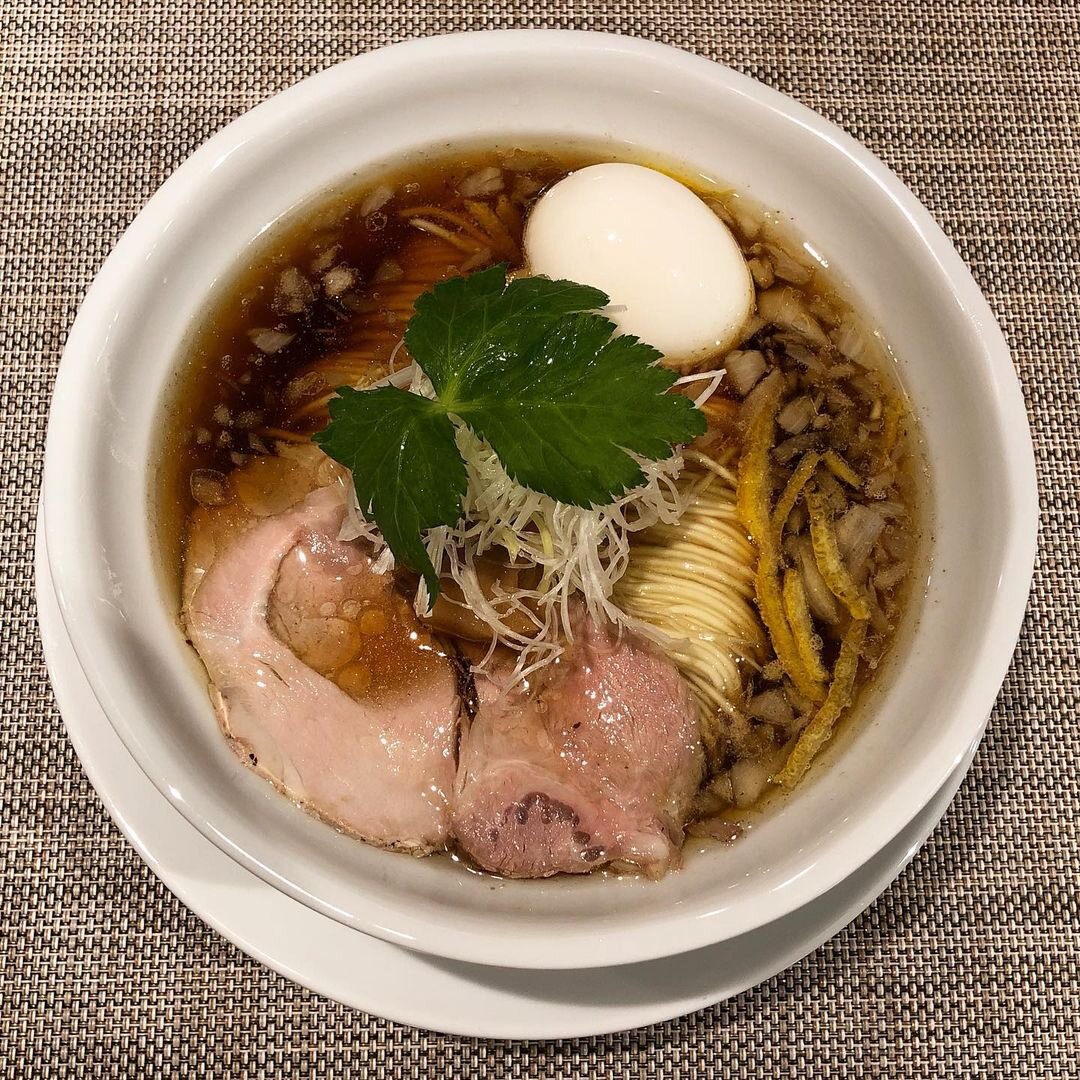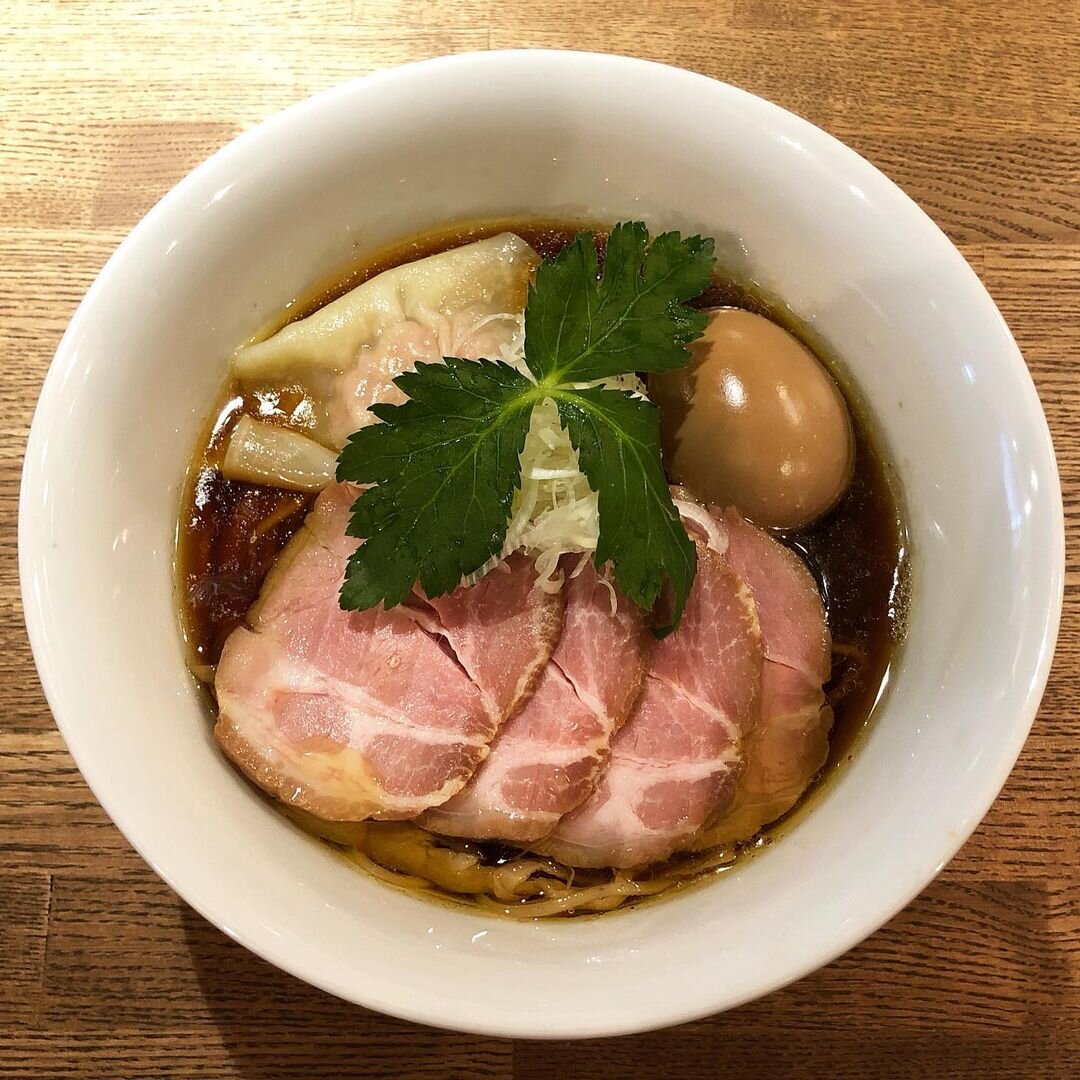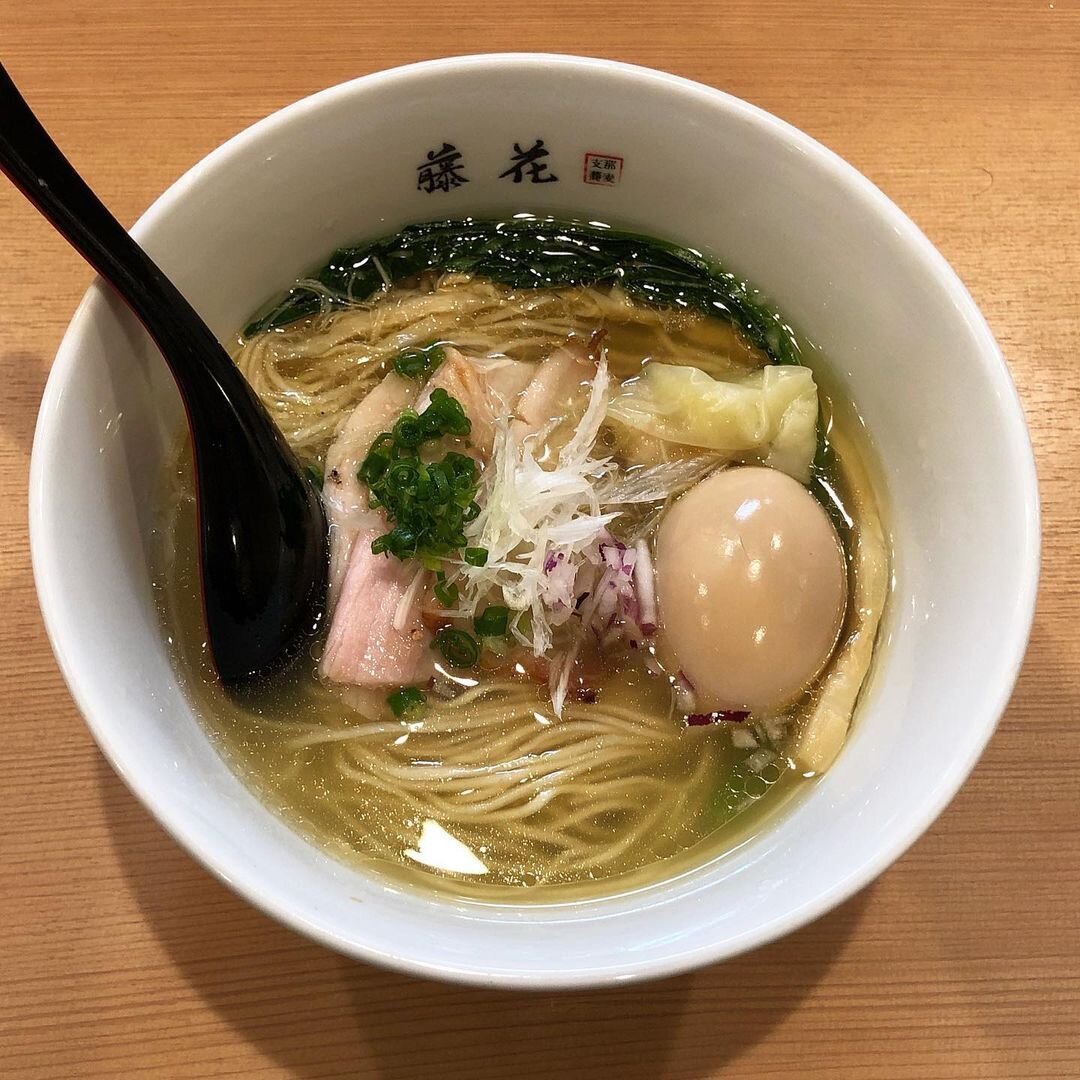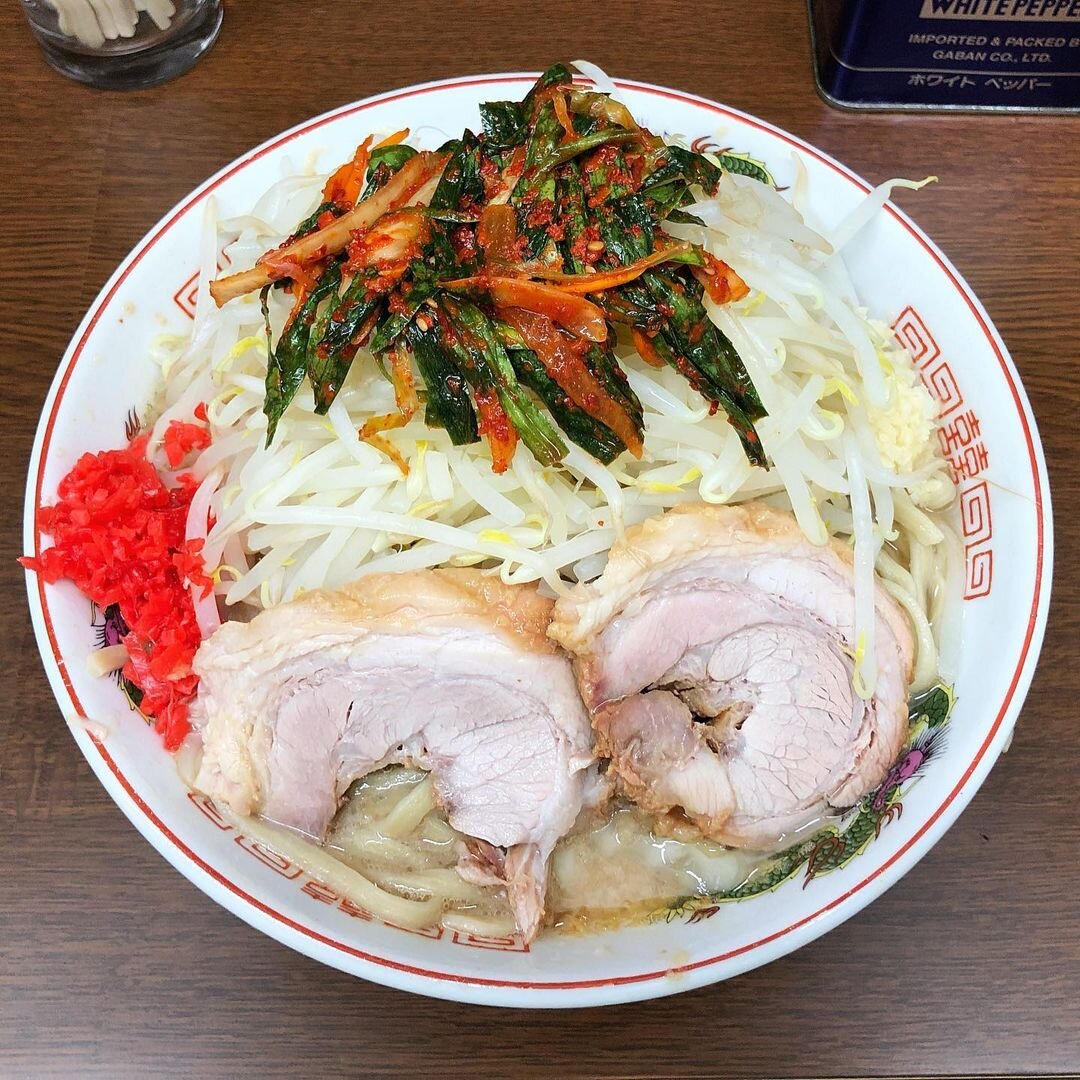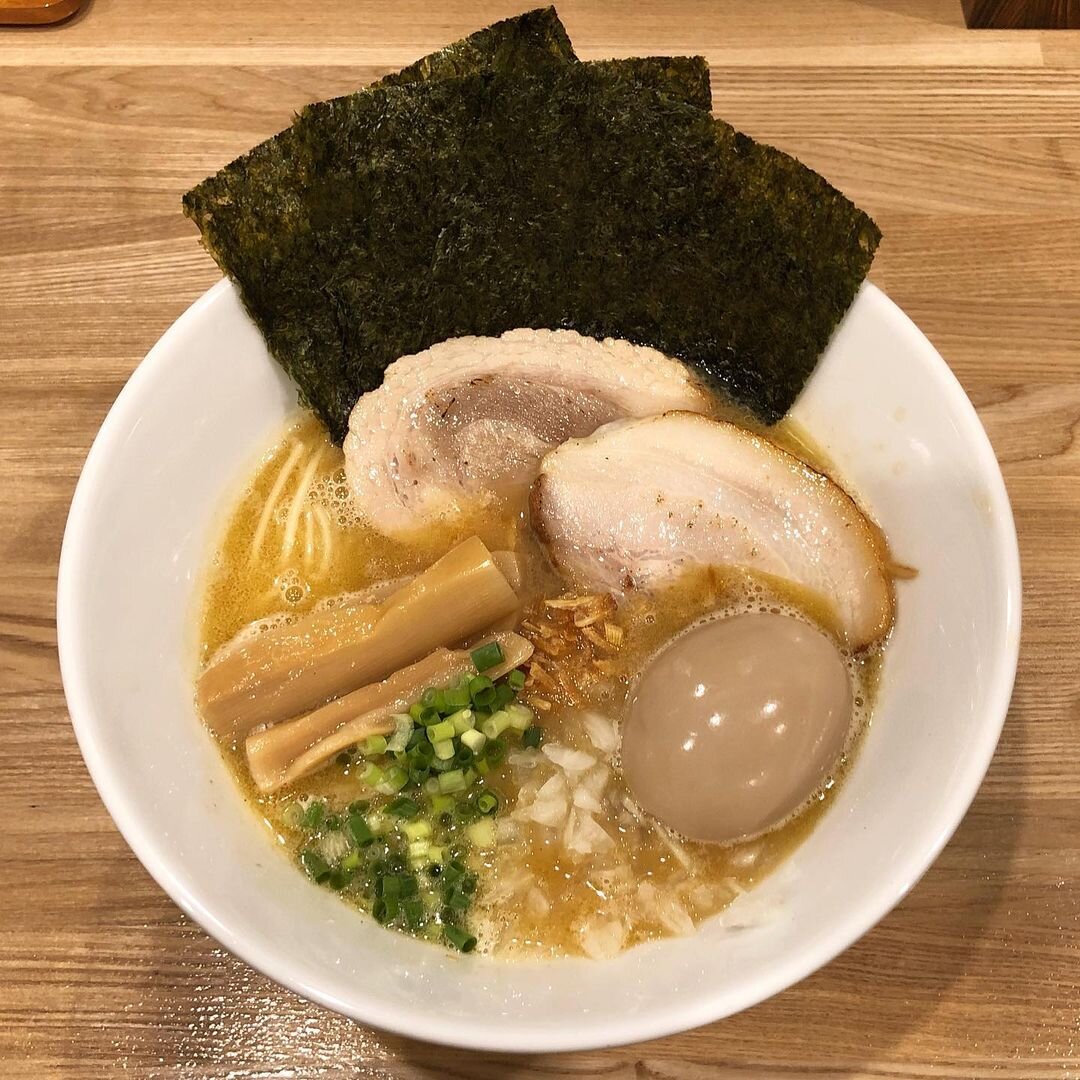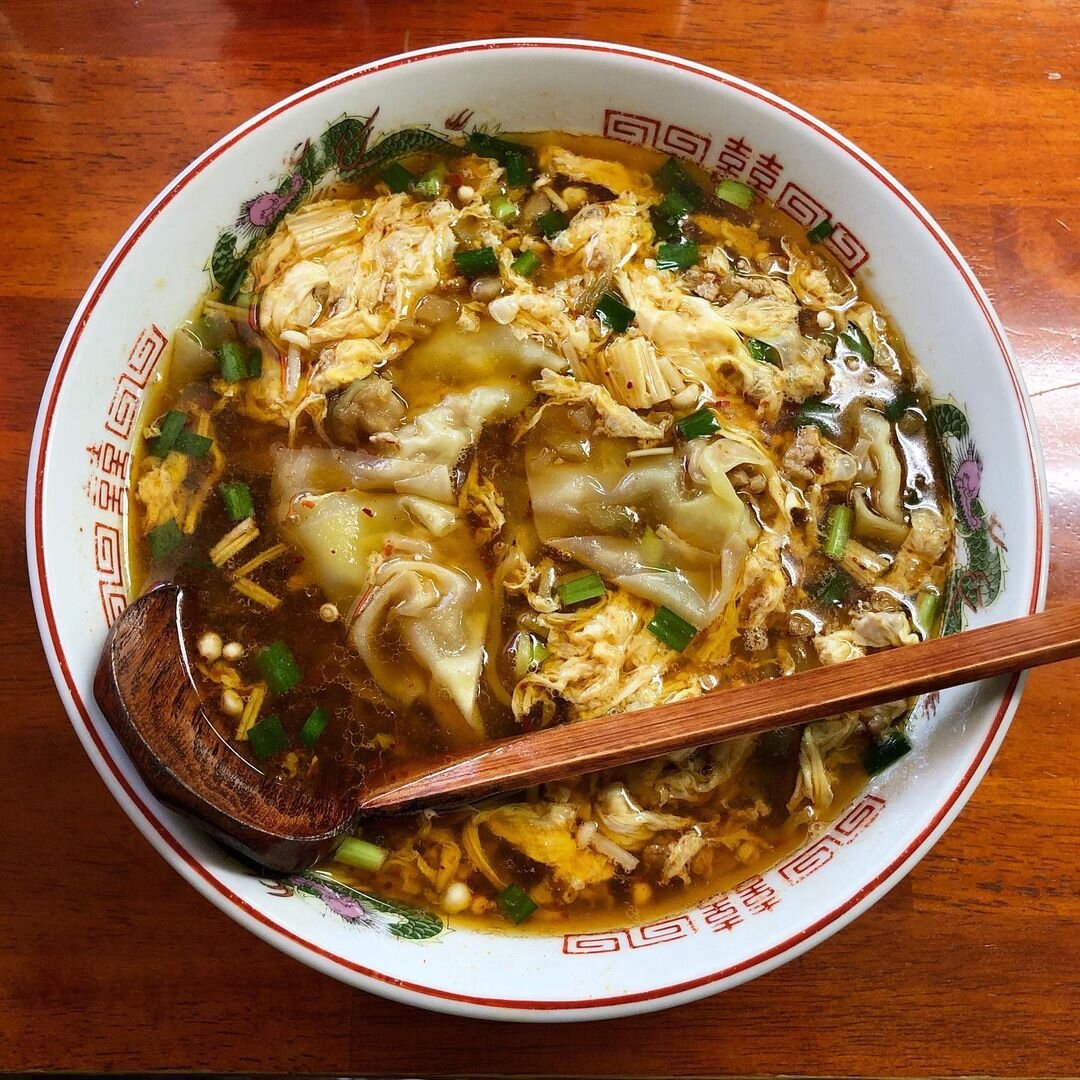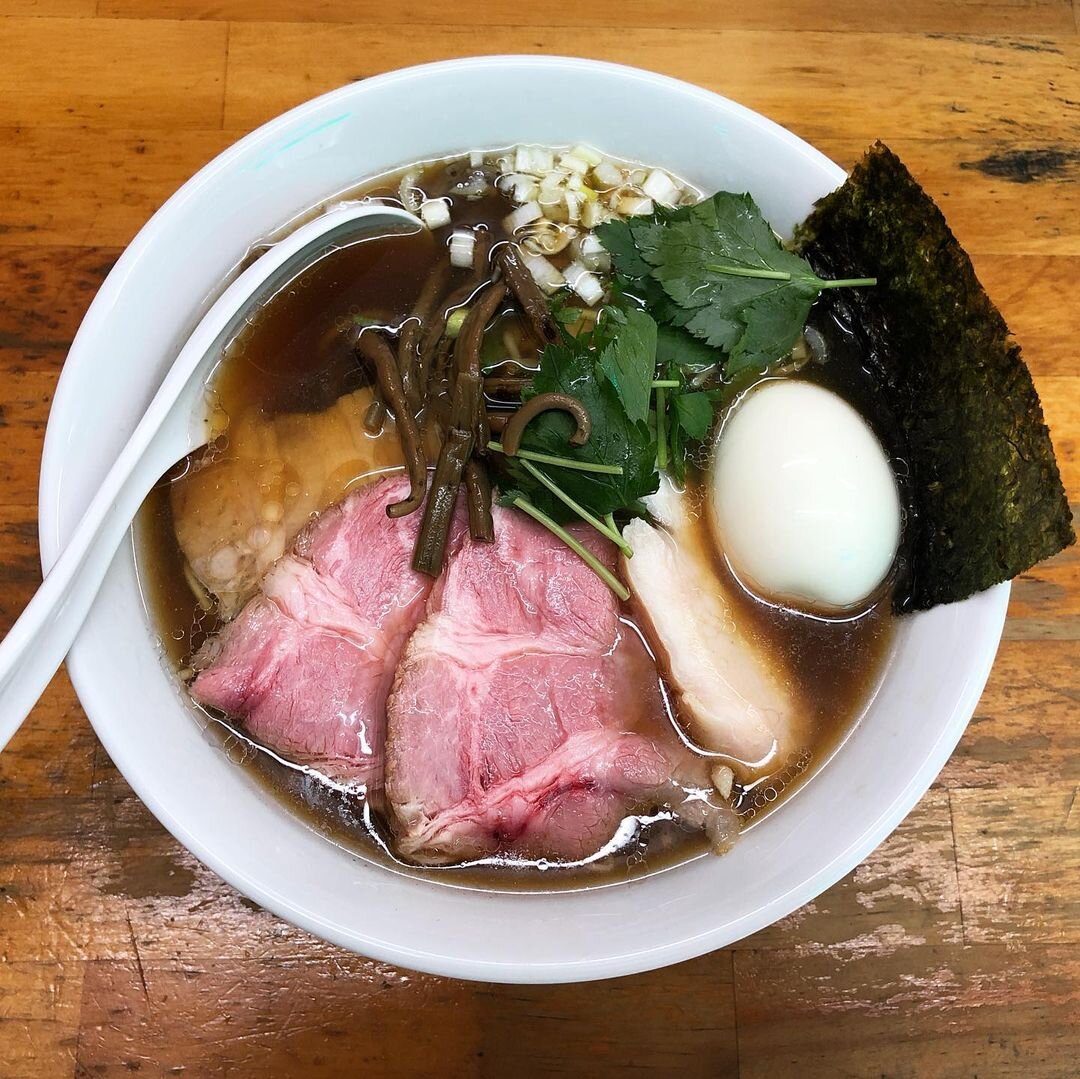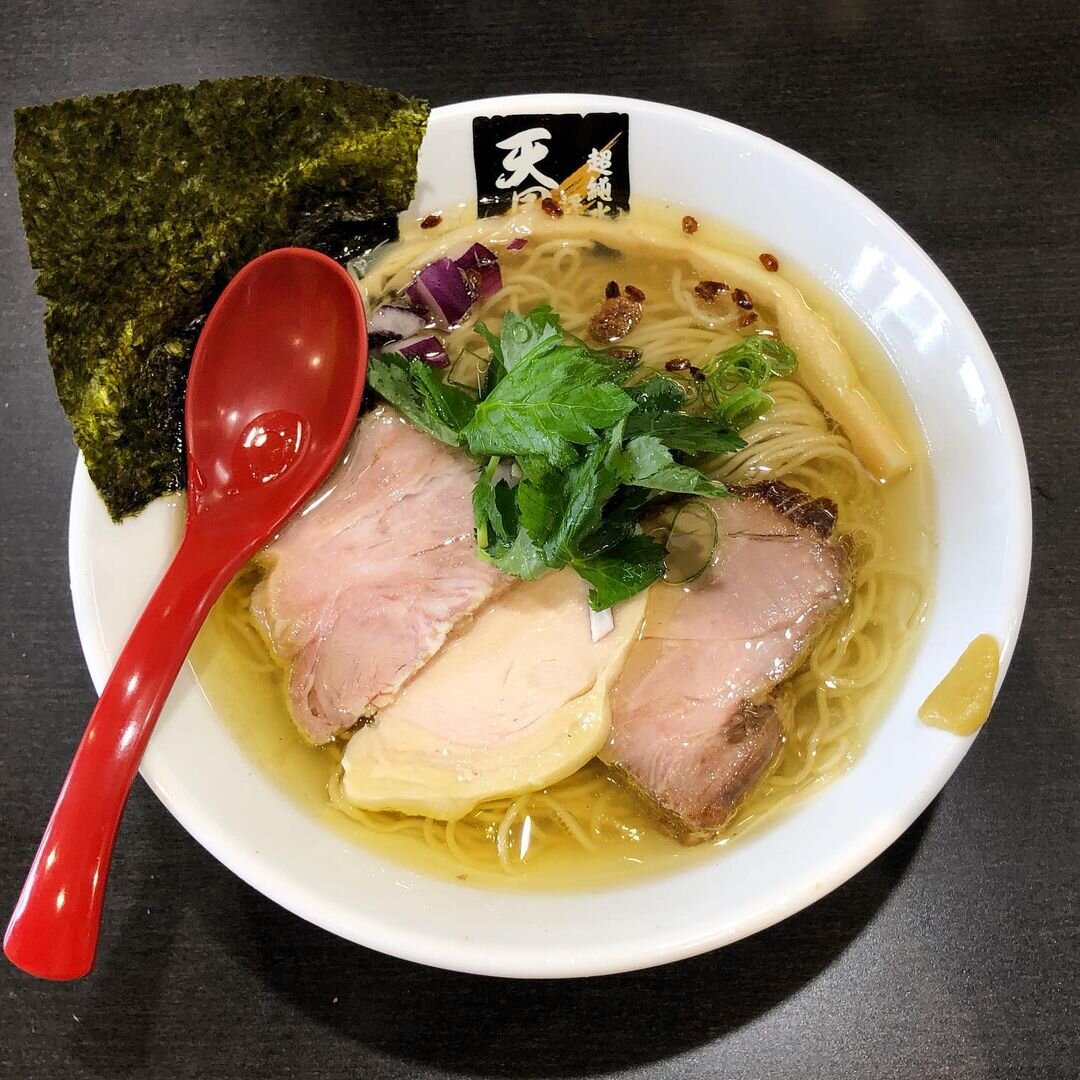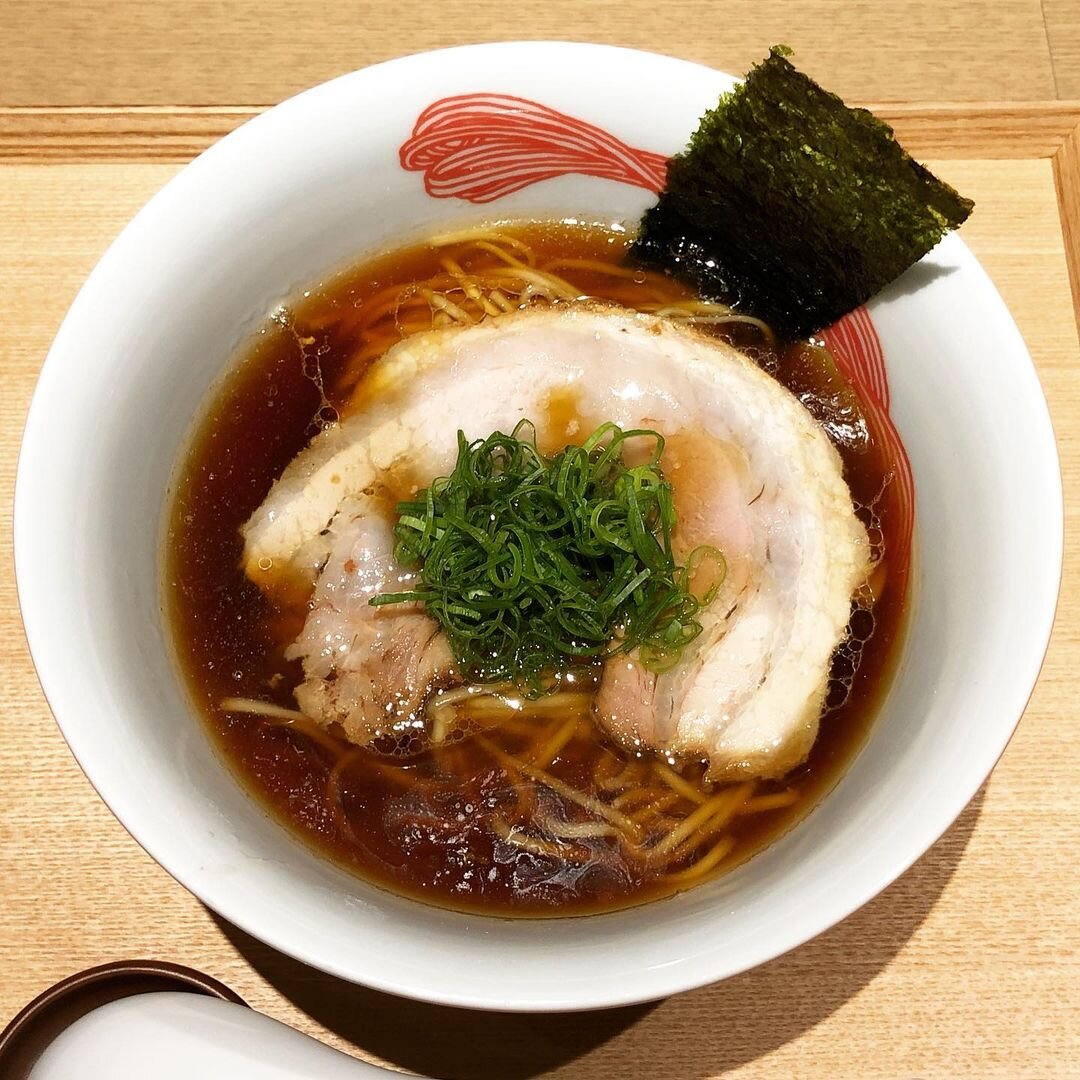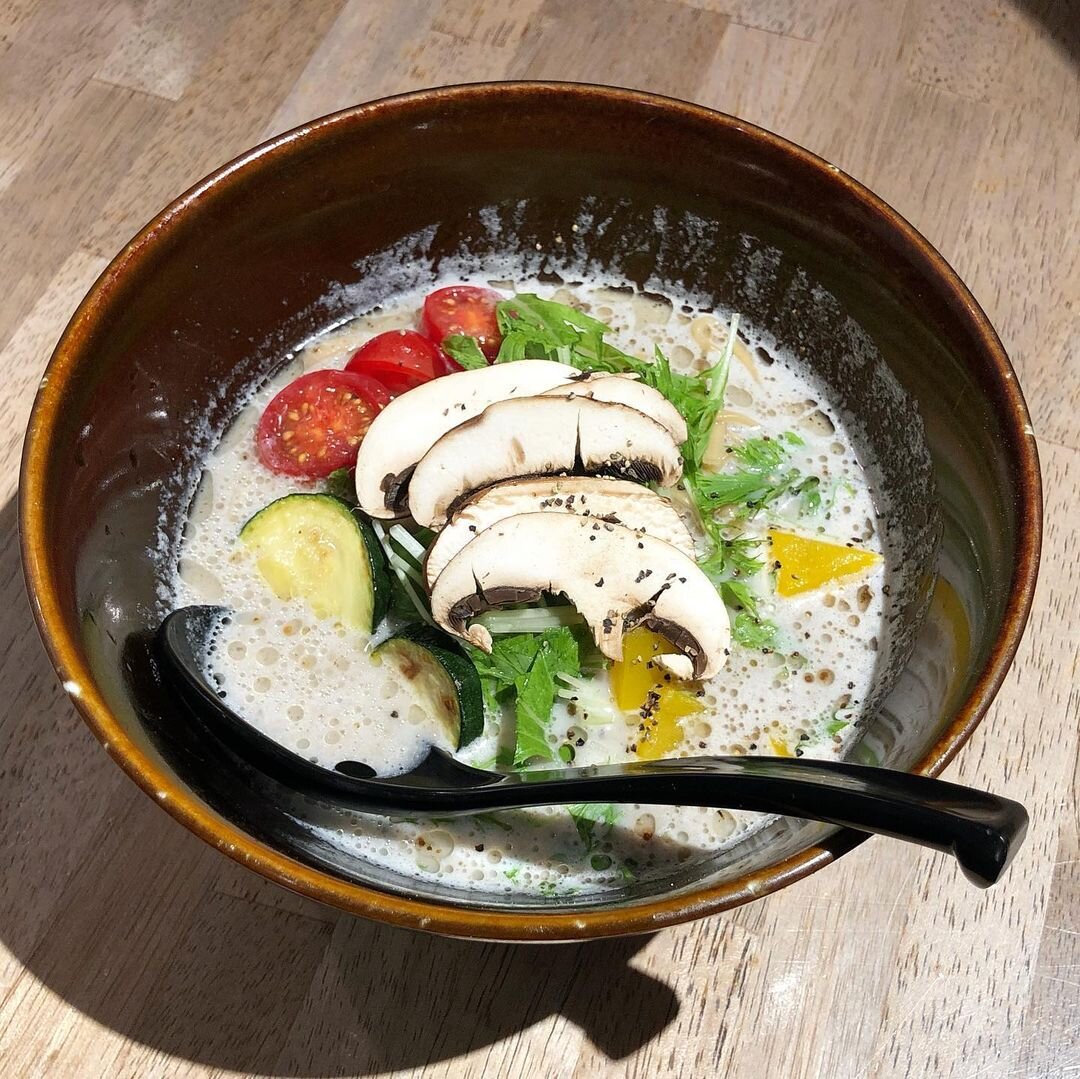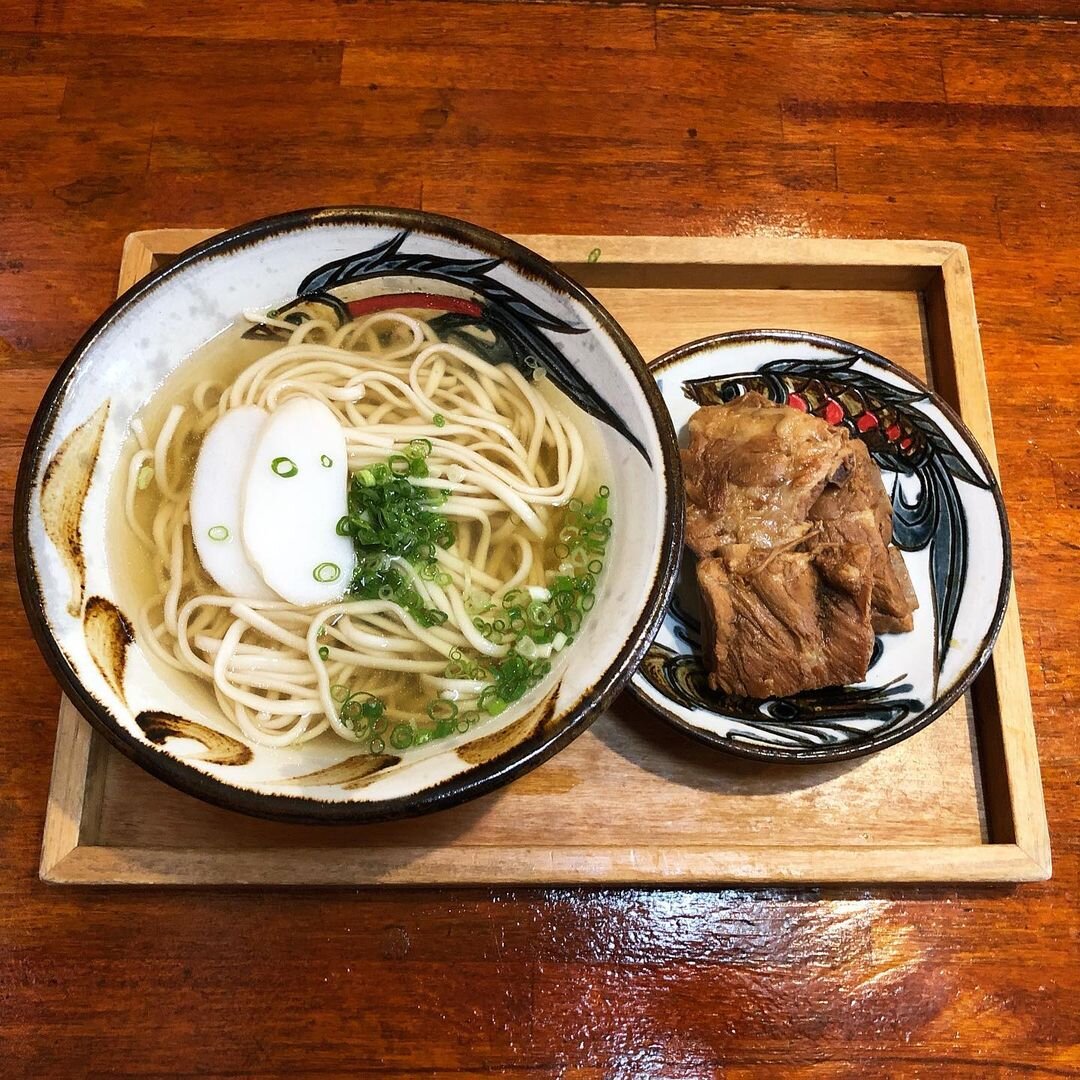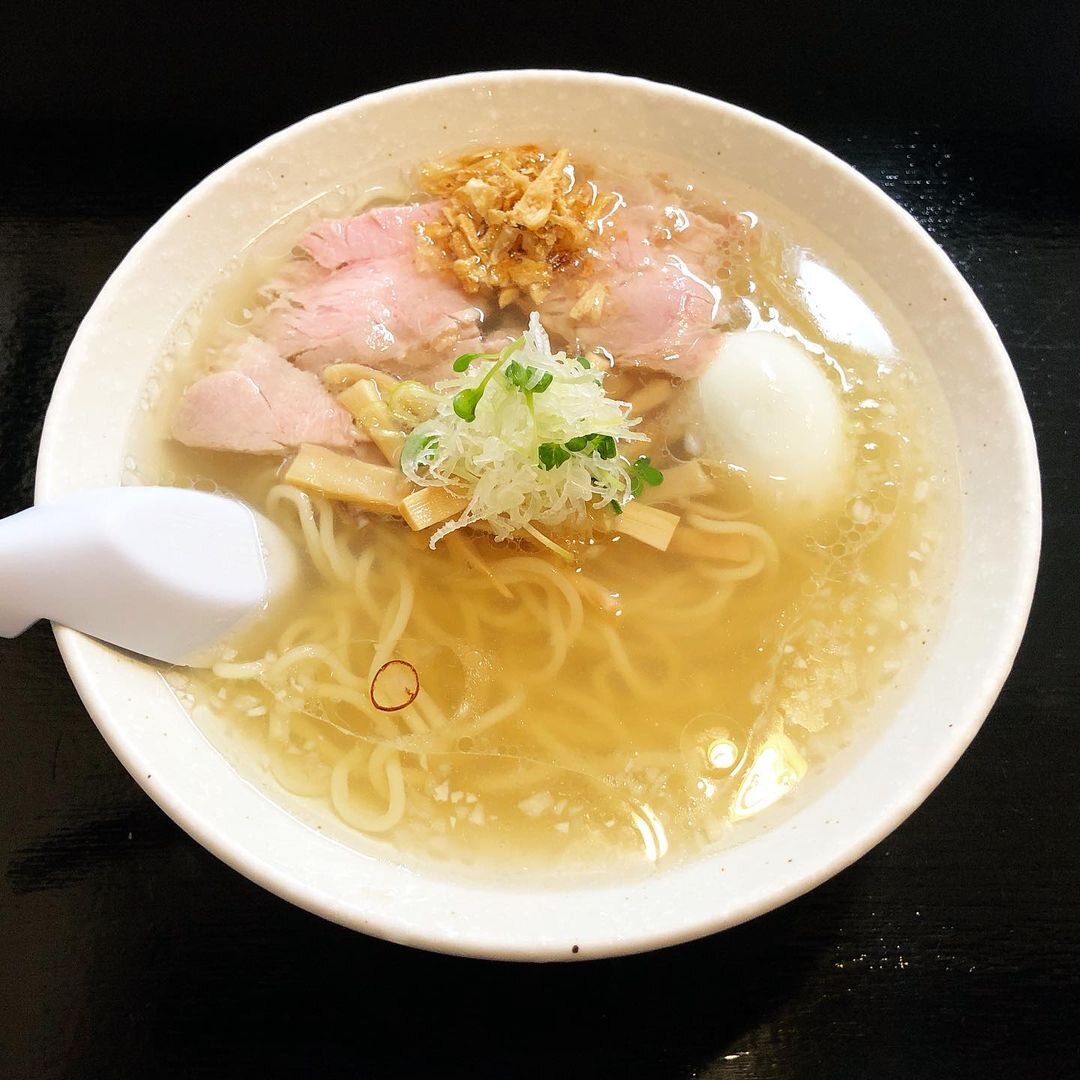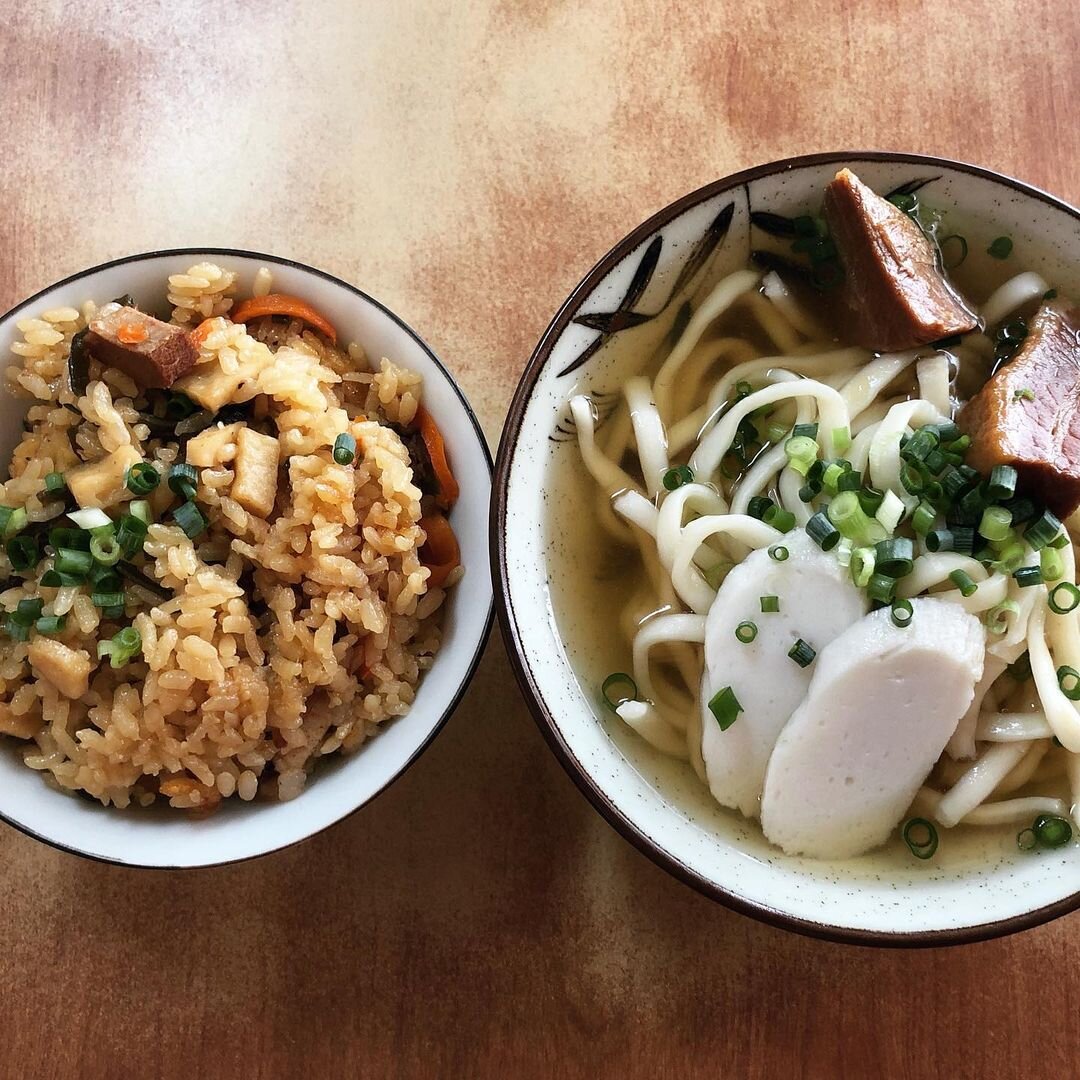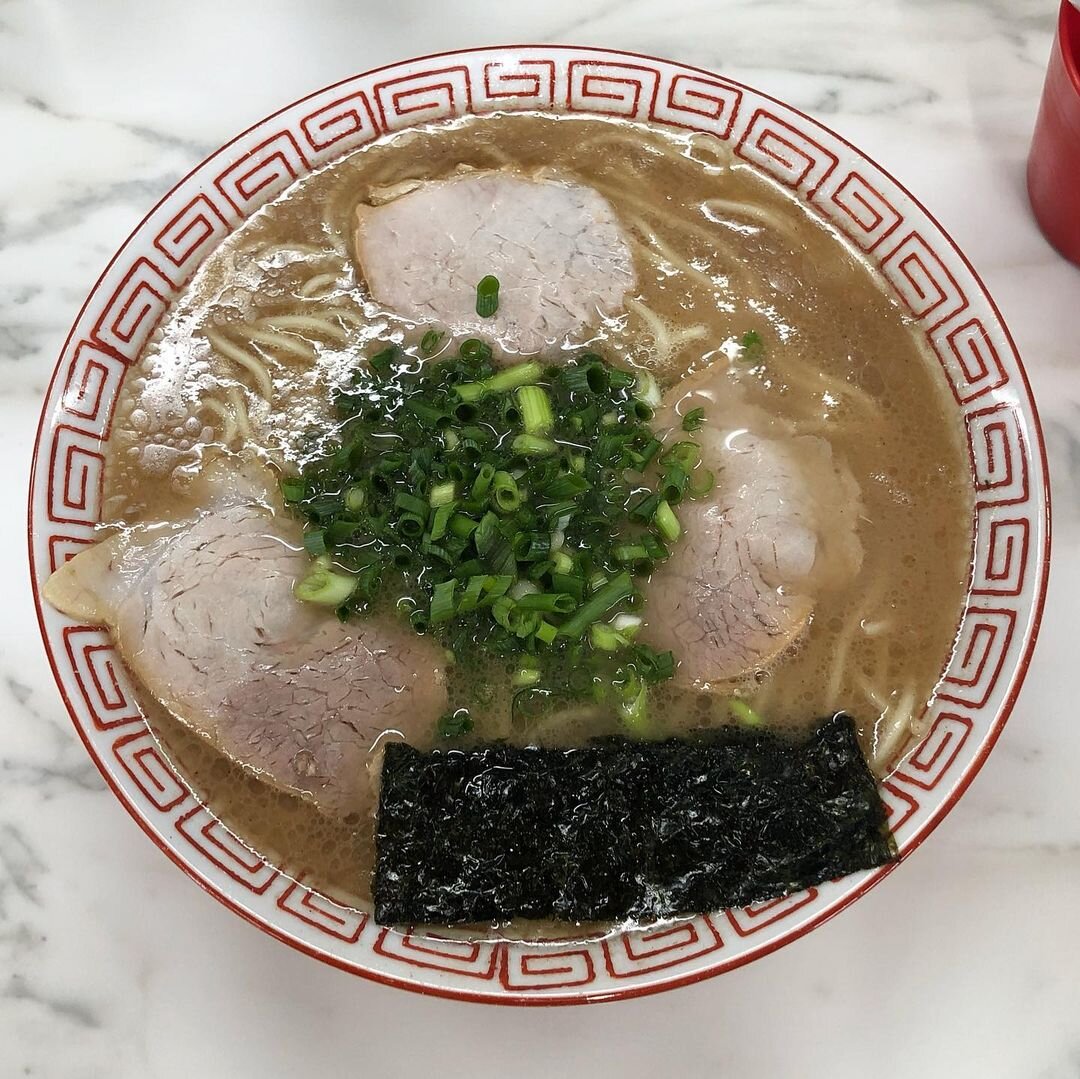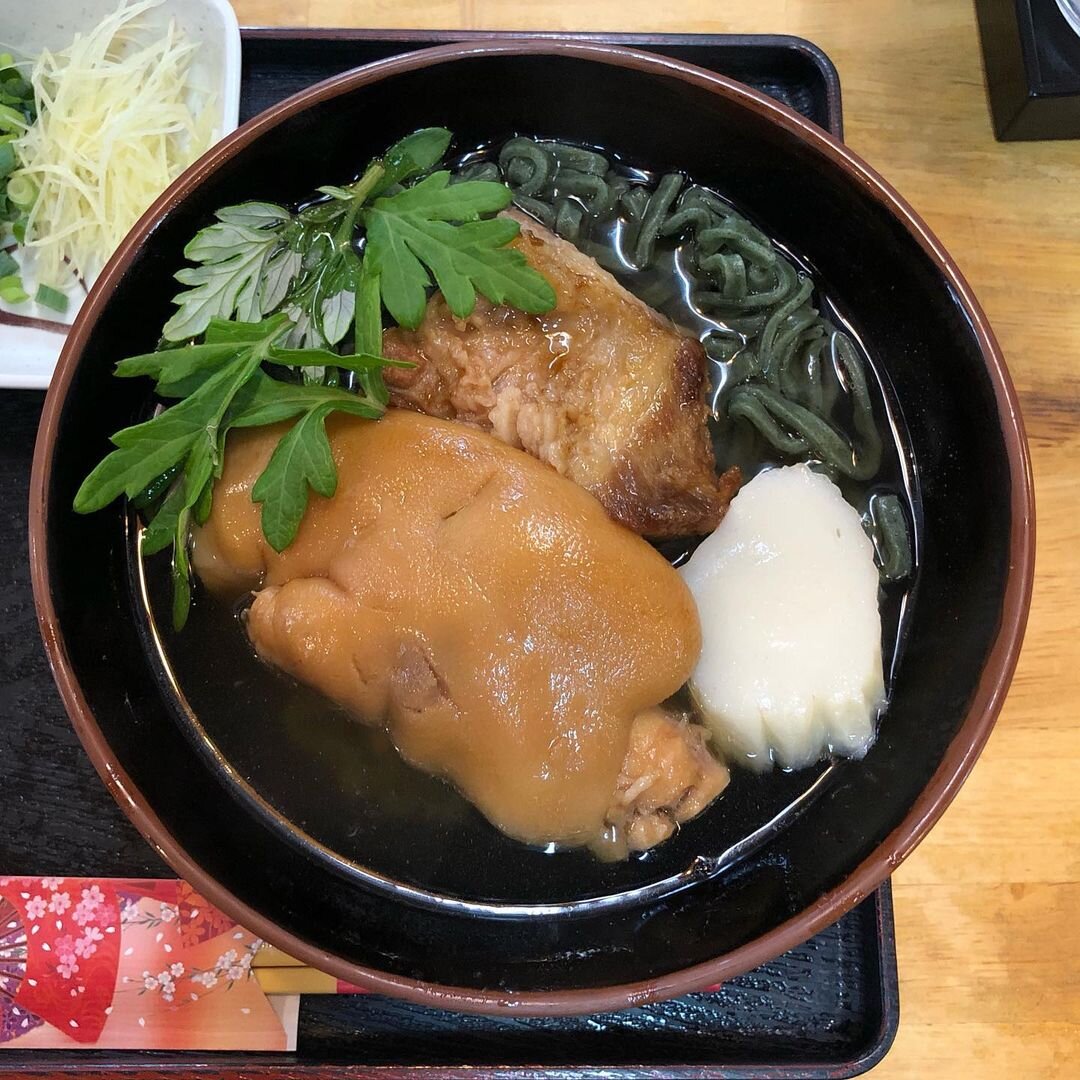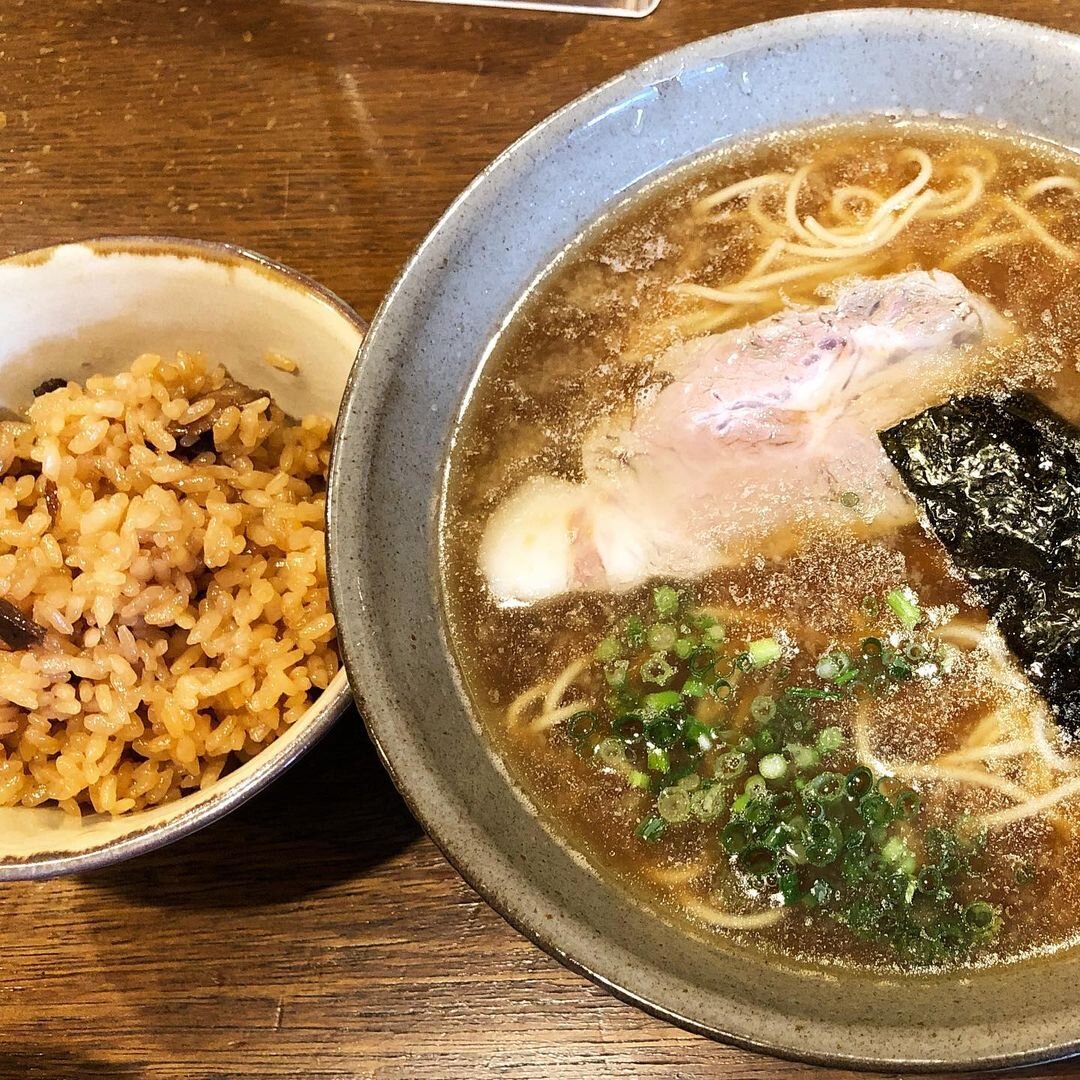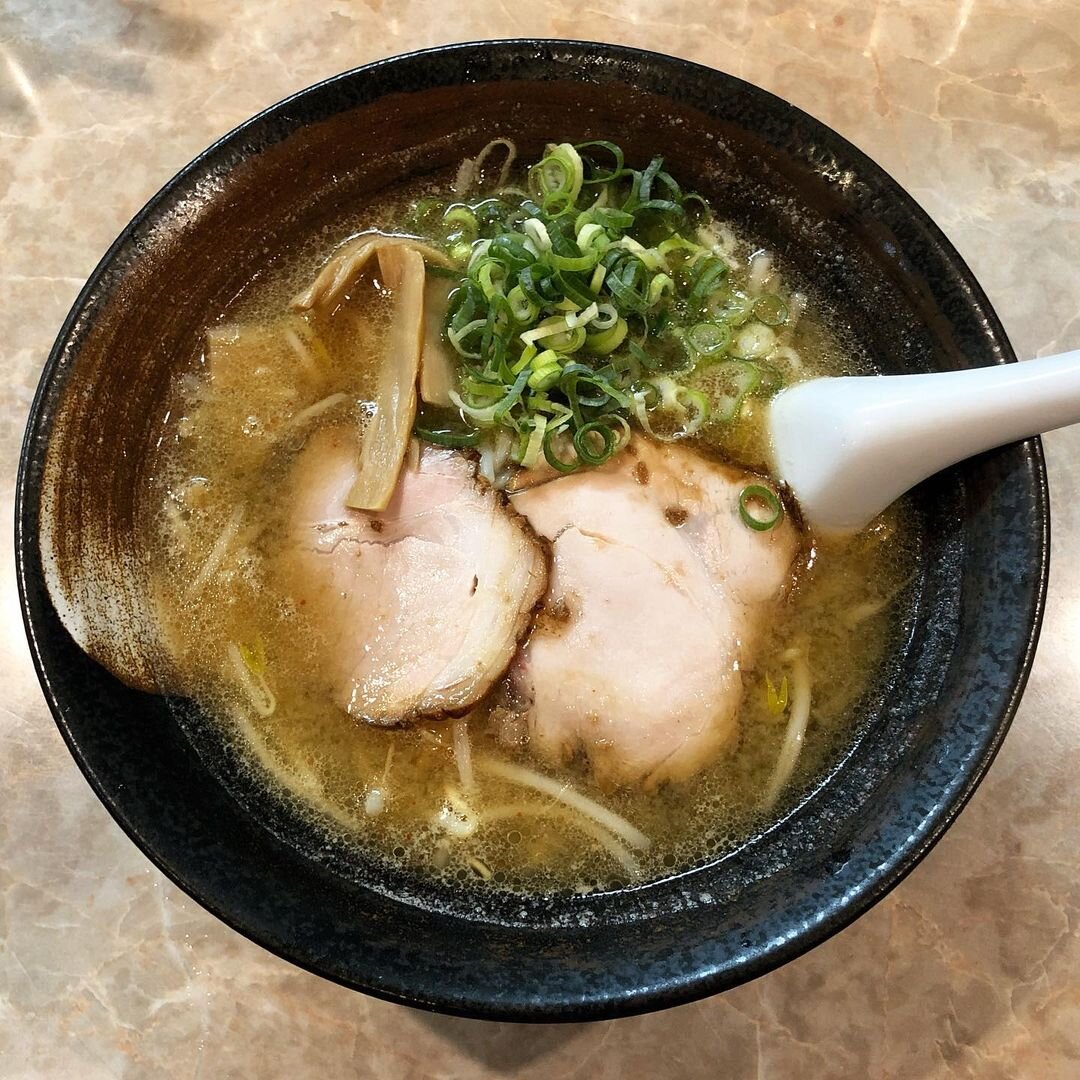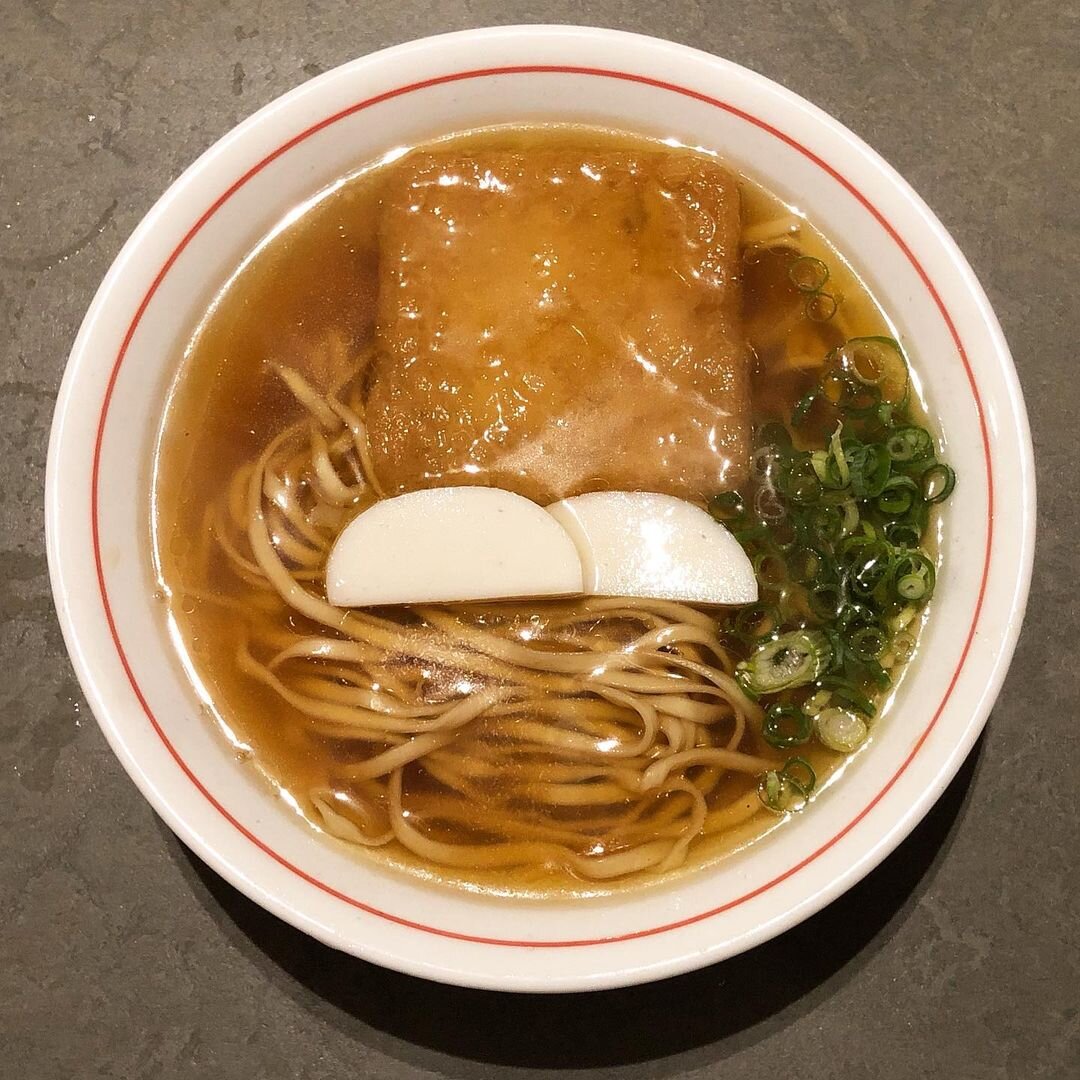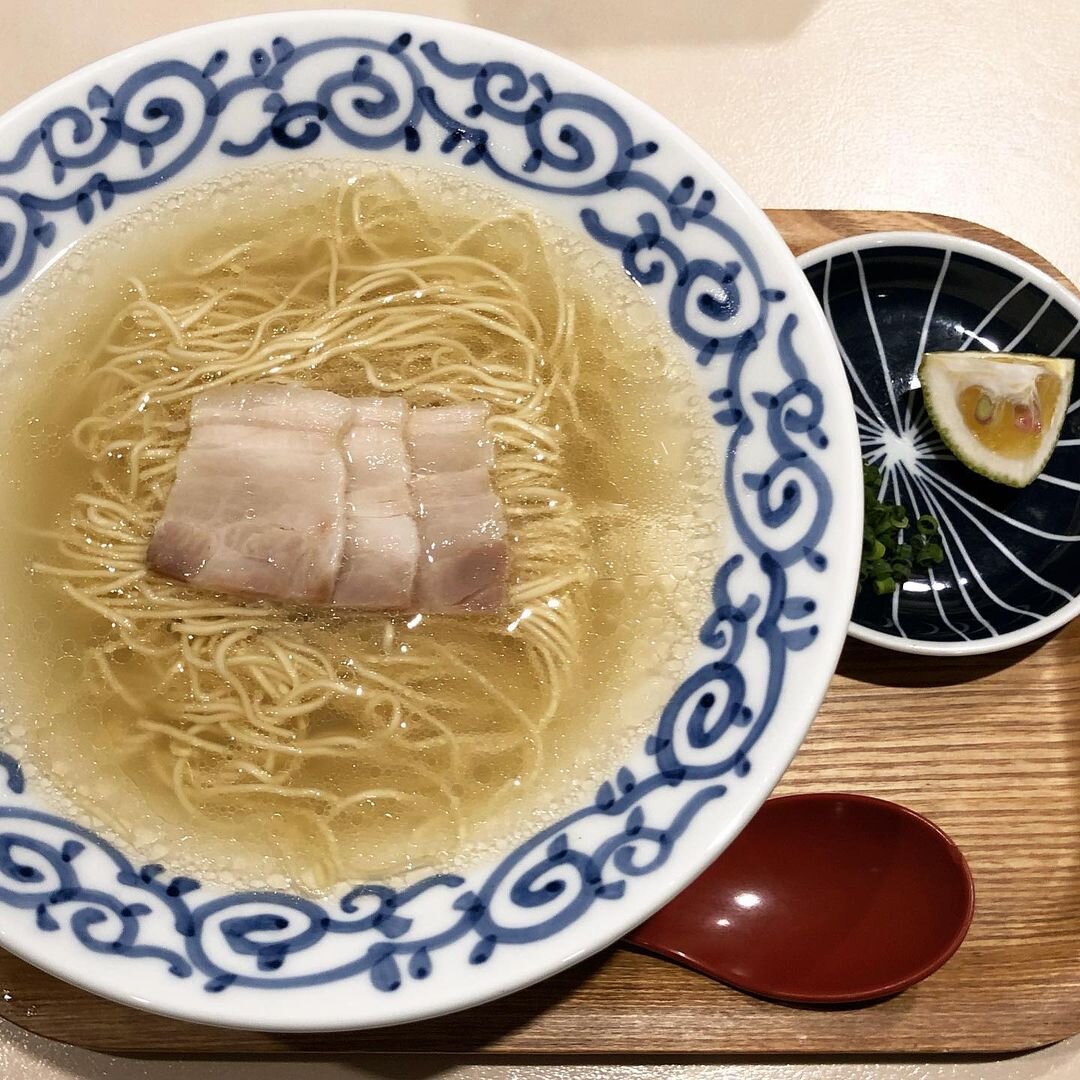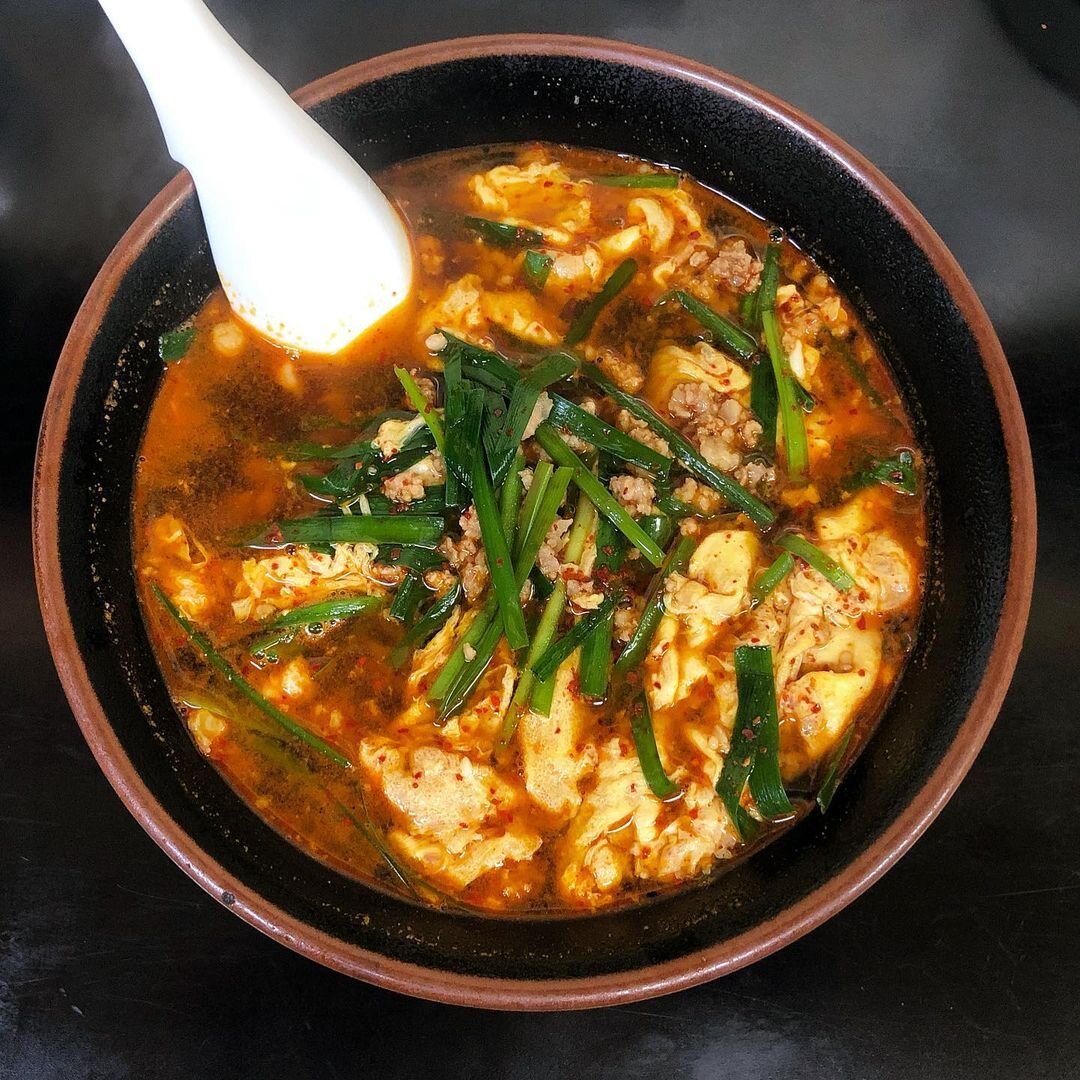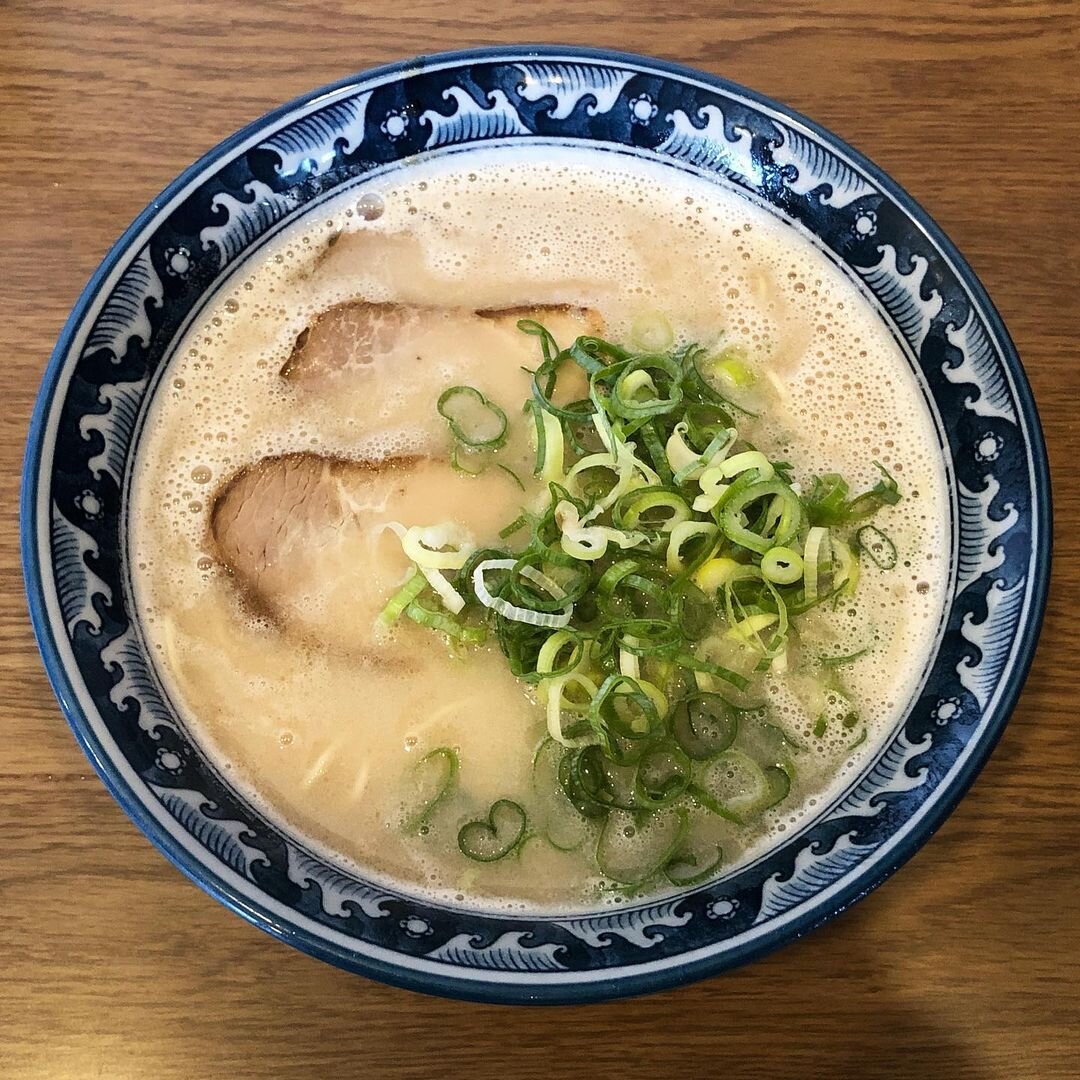EXPLORING RAMEN AND BRINGING IT TO THE WORLD: THE RAMEN BEAST
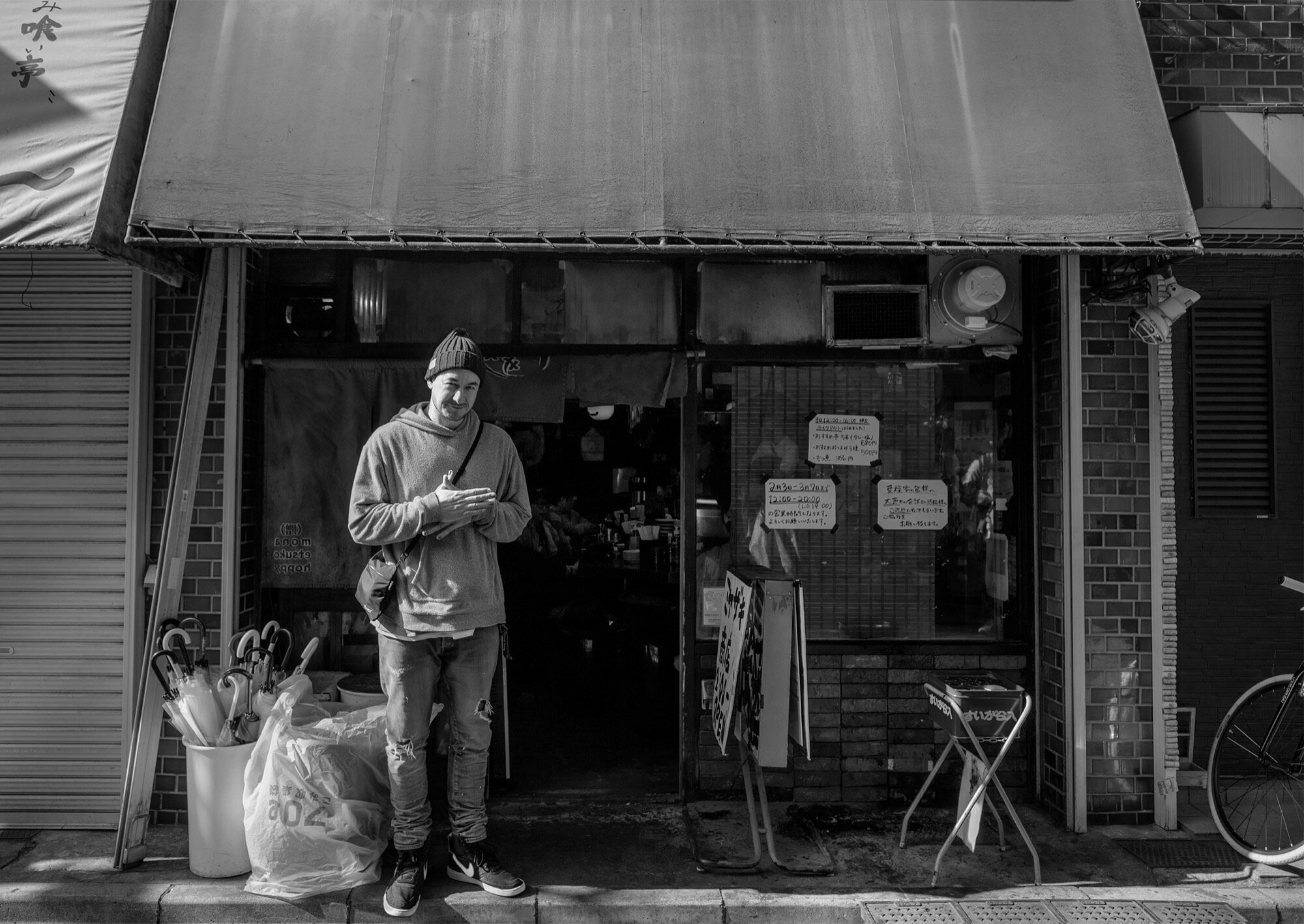
While Ramen earns love and craze from everyone around the world, the general knowledge around the dish is minimal. From its essential ingredients to the many variations, there are secrets behind the dish that are not usually discussed.
A meal that not many know much about besides its great taste. It resides beautiful home country and its astonishing and fascinating atmosphere while eating [in Japan]. One of the most popular dishes on this planet is still vastly unexplored and most of its secrets and interesting facts have not made it outside of Japan. Surprisingly enough, a lot of restaurants outside of Japan that have “Ramen” on their menus do not even serve authentic Ramen - the looks and presentation may be similar, but they are still worlds apart from an authentic bowl of Ramen. Commonly they are noodle soups disguised as Japanese Ramen.
Ramen is still a fairly young dish and the information and translations that make it outside of Japan are still limited, yet it is still strong enough to grow its popularity and adornment around the world. An authentic bowl of ramen is a very powerful representation of Japan.
There are only a handful of people - even in Japan - who are able to deconstruct this dish to its core parameters while exploring its many facets and ongoing modernisations, improvements, variations and developments. Of these experts is Abram Plaut aka The Ramen Beast.
image by Billy Fischer
With over 17 years of experience in Japan, and having been on one of the longest and most ambitious quests to find out about Ramen, he is far beyond the status of a foreigner that knows a lot about Ramen, he is one of the very few people worldwide - including Japanese Ramen hunters - that explores and knows the dish on a level that will forever make him an expert and historical culinary researcher.
He visited 408 different shops in the year 2020, and prior to that he has had an ongoing dedication, hunt, and drive. Abram belongs to the first Foreigners writing about Ramen for Japanese Newspaper and enjoys national respect and admiration from Japanese Ramen enthusiasts and chefs alike.
A unique person on a unique quest: EXPLORING RAMEN AND BRINGING IT TO THE WORLD
Sabukaru’s Editor in Chief Adrian Bianco [B] sat down Abram [RB] to dig deep into his quest, to talk about the 408 restaurants in 365 days, and to find out more about his future moves to bring authentic Ramen to the world.
B: Could you introduce yourself and what you do to our audience?
RB: My name is Abram, but most people know me as Ramen Beast. I’ve been living in Japan for seventeen years. I eat more ramen than probably any other non-Japanese person here. I’ve eaten at 408 different ramen shops over the past year and out of those 408, about 375 I had never been to previously. I’m eating at a new shop almost every time. Of course, there will be repeats sometimes. I love ramen and I’m trying to document the ramen community here because a lot of it is so unknown to other foreigners. On top of that, I’m a partner of a restaurant in San Francisco and in India. I used to also have a column in Playboy Magazine Japan reviewing ramen. After that, I partnered with a ramen chef named Shono who is a beast and has his own ramen group here in Tokyo. I brought him to my hometown, San Francisco, we opened a ramen shop, and then from that what I would like to do is introduce real ramen to people who have never had it. Whether that’s through media, starting my own brand, starting a newsletter, creating video content, kind of like what you guys do, or opening restaurants outside of Japan and bringing real ramen chefs and real ramen culture to people who have never experienced it before. Being a foreigner, you have your own idea of what ramen is based on instant noodles and whatnot, but then you come to Japan and have real ramen for the first time and it’s like “holy shit! This is what real ramen tastes like?” It happens to so many foreigners and I really want to bring that experience to people, you know?
B: I think ramen is so interesting because it’s a dish that almost everyone in the world knows of, but at the same time nobody really has a solid idea of what it actually is. So…What is real ramen?
RB: So there are two things, for a lot of people ramen is just the noodles. They don’t really know what Japanese ramen per se is, you know? They just think instant ramen noodles are ramen. Any dish you put those noodles in is ramen to them. In Japan, that’s not the case. Ramen is five different elements that have to be in balance. There’s the soup, the noodles, the tare sauce, the oil or fat, and then the toppings. The noodles have to be alkaline noodles, kansui, which gives ramen its distinctive chew. Within that structure you can have freedom to make so many different styles. It’s complicated because you have people around the world that are making food that they call ramen and like putting ramen noodles in it, and to Japanese people that’s not ramen. I don’t want to tell someone that their food is shitty, you know? They’re making good miso soup with noodles and calling it miso ramen. Yeah, maybe I’m a snob coming from Tokyo, I can be like “this is shit, this isn’t Japanese ramen,” but everybody’s got to start somewhere. I try not to be one to criticise people that are making food that's delicious for someone.
B: Whenever I introduce you to anyone, I tell them that you’re a historian and an active researcher. This is a dish that everybody knows but you’re the one outside of Japan that really goes deep. Are you aware of how important your role is for food culture?
RB: Thank you! First and foremost, I love food. So many people claim to be foodies but most of the people that say that are bullshitting. I can say honestly that food is one of the main reasons why I’m living in Japan and why I’ve stayed in Japan this long. Of course, there’s a lot of great things about Japanese culture but the fact that they don’t cut corners and they have such a high level of respect for each step of the process from where the ingredient comes from, to where it ends up on the plate, to the details of the bathroom of the restaurant, like we can go on and on about what makes Japan great. That comes out in the food a lot. There are like 30,000 ramen shops in Japan and all of them are different. No two bowls are exactly the same. The level is so high. In comparison to places around the world and food in general, to be able to explore ramen and eat a new bowl every day is fucking awesome.
B: We’re aware that your knowledge of ramen as a non-Japanese person is unleveled, but how many people in Japan actually lead a lifestyle that deep into ramen?
RB: There are some but not many. The Japanese are dedicated people, they go deep into whatever they’re into. Whether that’s cars or sneakers, you get the point. In the world of ramen in Japan, I’m not one of the most knowledgeable people. I eat hundreds of bowls a year, there are some guys that eat thousands. However, I think my presence is felt. There aren’t many foreigners that have gotten to where I’m at, if any. There’s a handful of us. Out of the handful, it’s really like Brian and myself and maybe a couple more that have eaten this much ramen. I’ve lived here for seventeen years and I’ve eaten at probably around three-thousand ramen shops. It’s not easy to do that. You’ve got to have dedication. But it’s fun! If I didn’t enjoy it, I wouldn’t do it.
B: How do you keep in shape?
RB: Basketball. Basketball for sure. I usually tell people that my first love even before ramen is basketball. That’s like my Ikigai[purpose in life]. Ever since I was a little kid I’ve played basketball at least two or three days a week. Yesterday, in the Shinagawa-ku semi-final we won by one point. We’ve got the championship game next weekend. I’m thirty-nine, I’m not sure how much longer I can keep doing this, but I don’t plan on eating hundreds and hundreds of bowls of ramen forever too. We’ll see.
B: What most of our followers probably don’t know about you is that you actually know a lot about sneakers as well.
RB: Yeah! I sell sneakers on the side, it’s fun to do as a hobby. I did it as my main gig for several years just because I have access to so much shit in Japan. I was a sneakerhead back in the day, instead of stocks, I just know if sneakers are going to go up, for the most part. When Jordan’s come out and I see SB Dunks that come out, I know that if I buy five pairs of them and I just hold on, there’s no way that I’m going to lose money. I’ve just kind of done that as a little side hustle.
B: So let’s talk about all of the ramen you’ve eaten over the past year, how did you even begin to go about that?
RB: So first of all, I never really try to go for such a high number because half of the year, I live outside of Japan. I’m travelling a lot to the States because of the restaurant, we own a restaurant in India, we just have various projects. I like to travel, I’m a foodie so I like to eat, because of that I’ve been able to make so many connections with foodies around the world. The craziest foodies with hundreds of thousands of followers will reach out to me when they come to Japan and ask me to take them to ramen places in exchange for them taking me to places like Noma. I’m usually out of Japan so much that I’m never pressured to go to two-hundred or three-hundred ramen shops. With that being said, I normally eat at an average of between one-hundred-fifty and three-hundred shops a year. For the past few years, I’ve gone to around three-hundred. In 2020, after the pandemic happened and it was like March or April, I started thinking “oh shit, I might be in Japan the whole year. I might be able to set a personal record for ramen shops.” Now that being said, a lot of stuff closed down in April for about a month so my numbers weren’t super high. But, I still had the time on my hands. My work situation has kind of been jacked up since the pandemic. The restaurant closed in the US, and a lot of the ramen shops in Japan are like Shokunin-san mom and pop run, so they don’t have a choice: they can’t close or else they’ll go out of business. For the most part, ramen has been open throughout the pandemic. The good ramen shops are busy as per usual. JR also had some crazy good deals on trains. Hotels were cheap everywhere. Ramen is something you can do alone, so doing this didn’t make me feel like I was being hazardous socializing with people or possibly spreading the virus. I was traveling alone, eating alone, generally spending my time alone, fucking loser right, haha.
B: I think that Ramen is one of those things that’s sometimes better alone.
RB: I think one thing that’s very misunderstood about ramen is that it really is a dish that’s best enjoyed alone. This is one of the reasons why I don’t like doing ramen tours. When you get a bowl of ramen at a ramen shop in Japan, you can take a photo or two for a second, but then you fucking eat it! You don’t get up and go to the bathroom, you don’t have a conversation, you need to eat it and get out especially if there’s people waiting. In the countryside, maybe things are a bit more relaxed. If we were at a ramen shop right now trying to do this interview, it wouldn’t work. You gotta eat and get out.
B: What keeps you motivated? Was there any point where you were ever like “fuck, I need a break?”
RB: Well there are a few things that keep me motivated. Number one, I fucking love ramen. The chase is awesome. Let’s compare it to sneakers, going and getting that new release is so awesome. When you have those fucking kicks in your hand and you’re like “YES!” You know? It’s like an adrenaline rush. Ramen tastes amazing so that’s like double points. On top of that, I’m trying to build a database. That motivates me too, especially when I’m in far regions of Japan that I know not many outsiders know of or have been to. There’s very little information known about them. That’s an extra rush. On the flip side, sometimes I’ll be out somewhere like Akita prefecture or Aomori prefecture and I’m like three days into a trip and I’ve had nine bowls of ramen or something. I’ll take the train for another couple of hours, wait in line, have another bowl of ramen and be like, “yeah that was pretty good. Not amazing.” And then it’s like, “now what?” I’ll be in the middle of nowhere thinking of what to do next. I’ll start to question myself and what the fuck I’m doing, haha. It’s kind of dope though, I realize that not everyone gets to do this. I’m at a time in my life right now where I have the time and the means and I feel really excited to learn about all this shit. It fires me up that I can teach people about it too.
B: How do you find out about all of these ramen spots, especially the ones in the countryside?
RB: It’s a combination of things. Number one is probably social media nowadays. I can find out about all sorts of stuff through Instagram and whatnot. Another big thing is word of mouth. Talking to ramen-heads and talking to locals gives me a lot of information. Also, ramen magazines have yearly rankings as well as sources on the internet. Tabelog rankings and all that stuff comes into play too. You always want to crush the highest-ranked shop. It never ends - I have hit lists for Tokyo, Kanegawa, Sapporo, and Kyushu all saved in my email and like I’m telling you, none of these lists I ever finish. Let’s say I have fifteen shops on my Kyoto hit list, I’ll go to Kyoto and while I’m crushing these and while I’m talking to people, it’s inevitable that places are going to get added. It’s fucking endless! You can eat ramen in Japan every day for the rest of your life at new shops and you will die before you eat at them all. You can’t do it.
B: In Tokyo do you sometimes have trouble finding new shops since you’ve eaten at so many already?
RB: I don’t have a hard time finding new places, the hardest thing is the distance and time constraints. A lot of the best shops are sometimes only open for lunch. If it’s located a two-hour train ride from my house, I’ve gotta take the train two hours, maybe wait in line if the shop is popular, eat for ten minutes, and then turn around and go back home. Sometimes it can be a four or five-hour time commitment just to eat lunch. By the time I get home, I’m hungry again for dinner! I think that’s the biggest obstacle. Most of the places within an hour radius I’ve eaten at.
B: Did you discover or find out about a new type of ramen or any new ingredients over the past year? In general, do you find new things?
RB: All the time. There’s over a hundred regional styles that are very localized. One that I usually give as an example is Katsuura-style tantanmen. There’s this one city in Chiba prefecture that is known for this one style of tantanmen that was invented because they wanted to serve a spicy ramen to keep these divers warm. Basically back in the day there were these female divers that would go diving for shellfish or something, I don’t know the full story. But when they would return in the winter, they would want hot ramen. Just in this little area, you have maybe forty ramen shops all serving one style of ramen. You have places like that all over Japan where there’s one little local style that you can’t really get anywhere except for that small area. Actually to be honest, there’s a couple shops in Tokyo that serve this style of tantanmen. There’s one in Ogikubo called Bingiri, there’s one in Koenji, I forget what it’s called, but the hottest level of spice there is called the anus-destroyer, haha. That one’s actually Katsuura-inspired. I’m just using this one style as an example because I’ve gone and had it in Katsuura. A lot of these local styles have been around for decades and aren’t the most amazing, sophisticated gourmet bowls that you could bring overseas. But it’s cool to see the culture and learn about it and be like, “why the fuck is this here? Why are they serving it?” On top of that, we’re also in an age where this is like the Kodawari age of ramen where people are trying to use new ingredients and come up with new things to push boundaries. On top of these localized styles, you have ramen chefs doing things that have never been done before. There’s always new experiences, some are good some are bad.
B: Were there any particular experiences from last year that you will always remember?
RB: I eat a lot of good ramen. Usually I’m seeking out awesome bowls, so it’s hard to tell you which ones were exceptional because so many are exceptional. There are like forty or fifty bowls from last year that I could tell you were amazing. Of course, if I had the list and you told me to rank them, I could maybe break it down to a top five or a top ten, but for me what’s the point of that? The experiences that stick out more if you were to put me on the spot are the ones that were incredibly bad or just totally wild.
B: What was the worst ramen experience you’ve had without name dropping?
RB: One of the worst bowls I’ve ever had in my life was this limited edition piranha ramen. It was at some touristy ninja restaurant in Asakusa. It was a super gimmicky limited edition piranha bowl and they flew in frozen piranhas from The Amazon. The soup was piranha based and they had whole tempura fried piranhas as a topping. Usually, you finish the noodles and try to finish everything, I didn’t even finish this one. It was so bad. It was brutal. Maybe piranhas are good when they’re fresh, but not frozen and shipped halfway across the world, haha.
B: Where was the most remote place you’ve eaten ramen?
RB: There’s been a couple. One was the island of Rishiri, which is off the northern coast of Hokkaido. That’s an area that’s very famous for Kelp Kombu. There’s one shop that’s very famous for the kelp ramen called Miraku. I’ve been to a few shops in Kyushu that are really far out. I went to this one shop in Kagoshima prefecture that you ride this rickety train up into the mountains to get to. You stop in this field and there’s nothing around, there’s like maybe an Onsen in the town, and some old guy serves ramen out of his house with his wife. It’s almond ramen! Everything is almonds! The soup has almonds in it, the noodles might have almonds in it, it’s topped with crushed almonds, it’s fucking bizarre! That one really sticks out. There’s a lot, I can go on and on.
B: I read an article about this guy who sells ramen out of his car workshop.
RB: Yeah! That guy’s in Tottori prefecture. The shop’s called Hot-Air. Basically this guy was running a car dealership with his wife for years and then at some point decided to start selling ramen next door. I think it started off as a hobby but the ramen became more and more popular. He got better at making ramen over time and now the ramen shop’s kind of famous. People flock there just to go eat ramen but it’s only open for lunch.
B: What are the most famous or legendary ramen shops in Japan?
RB: There are two very, very famous ramen shops in Japan. One is Iida Shouten in Yugawara and the other is Tomita, which they made a movie about. Both of those shops now you can get in by going to this website called Omakase, you basically make a reservation and get a ticket. You have to make a reservation now and get a time slot online. More and more restaurants are actually starting to do that. But yeah, those ones are both super famous and awesome. However, I usually don’t recommend them to people if they’re coming to Japan because you’re kind of wasting a day when there’s so much other cool stuff you could be doing. The first time you’re in Japan, the best ramen is always the ramen that’s near you. Ramen is fast food and it’s awesome and it’s everywhere in Japan! Don’t waste fucking six hours for some bowl that you could get at a shop near your hotel.
B: I read an amazing interview with you, Brian, and Casey [ramen writers] about Michelin rated ramen shops in Tokyo.. What is your opinion on just having such a small amount of Michelin Start spots, and Michelin ramen in general?
RB: I think Michelin should stick to fine dining! It’s what they’re good at. The Michelin guide to me is all about what restaurants are worth a special journey for. What restaurants do you need to make this trip? That’s not what ramen is to most people. I’m a freak, I eat a lot of ramen, but to most people ramen is fast food and should be enjoyed locally. For Michelin out of the thousands and thousands of fucking amazing ramen shops to suddenly just say, “oh, these two are better than the rest,” to people like me that eat more ramen than the guys at Michelin, it’s a little bit of an insult. Why these two shops? What did these two shops do? Nothing against those shops, they’re good shops, all of the shops in the Michelin guide are delicious. In the other interview you mentioned, I kind of compared it to them going to Singapore and doing the same thing with the hawker stalls. They started giving Michelin stars to chicken rice places. I think to a lot of Singaporeans, it’s kind of bullshit. Definitely gimmicky. “Why does this one chicken rice place get the star? I know ten places that are just as good.” You know? Michelin is trying to create hype and they’re trying to go into new areas. It’s a huge business. I kind of get it but I think they should stick to what they know best which is fine dining. They should stay out of the street food and the casual BQ level dining. If they wanted to have a Bib Gourmand guide and have like fifty recommended ramen shops, that would be awesome. But don’t just give two stars. That’s where they fucked up.
B: So you’ve been here for seventeen years, how has the ramen industry changed over the period of time that you’ve lived here?
RB: It’s definitely growing wider and wider. It’s a lot more saturated than it used to be. There’s also a lot more high-quality ramen. What I think is most amazing is this tension where ramen historically has always been cheap fast food, like five-hundred yen or cheaper, and now we have this movement where people are using premium ingredients and wild techniques, but they still have to try and keep it cheap. A lot of Japanese people won’t buy ramen if it goes over a thousand yen. To me, I think it’s insanely underpriced. Compared to other food that is less prepared and charged two or three times more, it just doesn’t make sense. It’s awesome for people though! I’ve been to so many hundred dollar meals and had ramen the day after and been like “this is just as good!” Just as much happiness.
B: Tell us about the ramen restaurant in San Francisco! As a connoisseur, you must be pretty picky about the recipes and whatnot. How do you keep good quality control?
RB: You always have to have someone that knows ramen in the kitchen. You also have to have good control over an important aspect of the ramen such as the tare sauce. People in the kitchen can’t mess that up. For us, that means having a Japanese chef that has worked at one of our restaurants in Japan running that restaurant. You have to have someone there that cares, it’s the restaurant business you know? It’s not easy at all.
B: So how did you guys actually kick off the restaurant in San Francisco?
RB: When we opened in 2016, we were delayed for like two years. We opened a restaurant for the first time by ourselves while we were living in another country you know? In San Francisco nonetheless, one of the most difficult places to open a restaurant. To make matters worse, we converted a non-restaurant space into a restaurant space. Most people in the restaurant industry know how difficult that is, especially in California. Almost everyone takes a pre-existing restaurant and turns it into their own, but we didn’t know that since this was our first time. As a result, it took us two years to finally open it. From the time we actually started, it could be three years. I think the hype for our restaurant naturally built because there was this space that people knew was going to turn into a ramen restaurant that continually kept getting delayed.
B: Was there any competition on your level?
RB: When we opened, no. Not on our level. That was one of the reasons why we did it. I never wanted to get into the restaurant business. My brother is a chef, I have friends that own restaurants, and I saw firsthand how difficult it was. This only happened because of the situation I was in. Reviewing ramen shops, being a foodie, and knowing the demand for ethnic cuisine in California really made me want to do this. There’s a lot of phenomenal Asian cuisine in the Bay Area since there’s a large Asian population and a huge demand for it. However, there’s not any good ramen. If you took a ramen master from Japan to San Francisco, they would be very disappointed. Our story sold itself, people heard that there was a real ramen shop coming that took very long to open. When we finally opened the media jumped to ask us what the story was. Our space was boarded up for two years and they really wanted to know why. We told them about our real ramen master who’s from Tokyo, how I’m a ramen critic from the Bay Area that spends a lot of my time in Japan, and people thought our story was wild. On opening day, a hundred people were in line. It was down the block and around the corner, and it was our first time serving customers so the service was a little bit slow. Some people apparently waited like four or five hours to get a bowl. Even though I was freaking out at the time, the hype that that generated kind of made us famous for a little bit.
B: How did you get all of the equipment for ramen-making to the States?
RB: The most difficult thing is the noodle maker if you’re going to make your own noodles, which I recommend doing. You also need to have someone that knows how to use it. Just because you have a noodle maker, it doesn’t mean you’re going to make good noodles. You can still make shitty fresh ramen noodles. The noodle maker with shipping can cost around twenty-thousand or thirty-thousand dollars. That’s probably the most expensive piece of equipment that needs to be shipped from Japan. Almost everything else can be found in your country. Knowing the best setup or layout of the kitchen is also kind of important for ramen. There’s kitchens that are good for ramen and then there are kitchens that are shitty for ramen.
B: Do you ship things like Shoyu to San Francisco as well?
RB: No but this is an area that’s a bit tricky. In Japan, if you want to use Shoyu for ramen, which is a key component, you have hundreds and hundreds of small purveyors. These guys are craft Shoyu makers that have been around for centuries. You can’t get that shit overseas! They don’t make the quantity to be able to export. To import Shoyu into the US, they make you promise that you’ll buy like five or ten palettes worth of stuff. If you’re getting it from some small maker in Japan, you can’t do that. Not to mention the specifics and requirements needed on preservatives and ingredients and all of that shit. That being said, you’ve gotta make up for it in other ways. With food in general, I’m a big believer in fresh and local being best. Ideally, you want to be making ramen out of fresh local ingredients. At some point, you’re going to have to compromise and make it not as Japanese anymore, because if you’re only using fresh and local ingredients in places like Nebraska or Cologne, you’re not going to have fresh soy sauce and all of these ingredients that are normally used in ramen. I think there’s going to be this process of people with ramen knowledge creating new ramen culture outside of Japan. That’s what we’re starting to see with some of the best ramen chefs. The best ramen isn’t even being made in restaurants, it's being made in people’s homes. Like I said earlier, if you don’t have someone in the kitchen that really knows ramen, the level drops off immediately. All the geeks that know a lot about ramen are making ramen for themselves. They know how difficult it is to open a restaurant and put someone else in the kitchen. The best ramen bowls are the ones at pop-ups or the kits, or guys that have other jobs and are doing ramen on the side. Or the guys that have their own shops but are actually in the kitchen themselves.
B: What’s on the horizon for more ramen shops opening?
RB: It’s a tricky situation right now because we were in advanced talks with so many people when this pandemic hit. As everyone knows, this pandemic has been fucking terrible for the restaurant industry. We built a ramen restaurant in New Delhi and I flew there for the grand opening in March, and got turned away at the airport. I flew the day they shut it down! I flew like eight hours and was at the airport in New Delhi for eight hours, and then had to fly back for like ten or twelve hours back to Japan, it was a longer flight on the way back. We have a brand new restaurant in New Delhi ready for opening since last March that has been sitting there for almost a year and we can’t travel there. We’ve been doing video calls with the Indian chefs, we’ve been sending them ingredients, we’ve been sending them recipes. They finally opened two weeks ago without us! They couldn’t wait for us any longer, haha. The craziest thing is, Shono and myself haven’t tried the food yet! We don’t even know if it’s good or not, haha. Getting there and working on that situation is a priority. We also have a second restaurant in San Francisco that has been under construction for two years in Twitter headquarters. Twitter announced that employees don’t have to go back to work anymore, so we don’t know what’s going to happen with that… We have a franchised ramen restaurant that’s going to be opening in Marin county which is my hometown. That’s supposedly going to open this year but again, we don’t know what’s going to happen.
B: These past few years, super famous ramen chains and even independent ramen shops have teamed up with cup noodle companies. I feel like more and more people are getting exposed to different types of ramen through that. What is your opinion on teaming up with cup ramen companies to try and make good ramen more accessible?
RB: My partner has done that, Shono-san. Yep. It’s just business, I’m totally fine with it. Most of these ramen chefs once they get famous get approached by Nissin or other companies to collaborate. They offer to sell the collaboration at every 7/11 in Japan. The masters usually only get like one or two yen per sale. It’s huge exposure for the chefs, most of them don’t do it for the money. It’s for exposure. It’s great publicity. There are some masters that turn that opportunity down because they don’t want to downgrade their brand into instant-form. Usually what happens is the masters go into the factory, try some samples, and then make slight changes based on that. They’re not really making the recipes you know? It’s some dude in a lab coat who is semi-instructed by the masters on flavor. Personally, I don’t eat that shit because I eat so much real ramen that I’ve retired from instant. I very rarely eat instant ramen. It’s a waste of stomach space for me.
B: What other Japanese food do you like with besides ramen?
RB: Everything! Although my favorite food of all time is probably sushi. Even more than ramen.
B: You’ve mentioned so many different kinds of sushi. What’s your go-to?
RB: Edomae sushi is like the gold standard of sushi. Amongst foodies that know Japanese food really well, most people would say that not the best of the best restaurants, in general, are in Tokyo. If you want the best tempura in Japan, you go to maybe a place in Shizuoka or maybe a place in Nagoya. If you want the best tonkatsu, you go to maybe a place in Osaka. If you want the best udon, you might go to Shikoku. Sushi in Tokyo is the best in the world. Edomae sushi is the real roots of sushi culture, unless you want to talk about other things like funazushi from Lake Biwa. That’s a little bit different. I think Tokyo overall has the best sushi restaurants. That being said, there are localized styles of sushi around Japan that are also really good. Sushi’s amazing, I love sushi. I only want to eat sushi like once a week. Ramen I could eat every day. I don’t want to eat sushi every day.
B: So for the last questions I know you don’t like doing lists but imagine that the gods of ramen decided to close all but five ramen shops in Tokyo. Which five ramen shops would you want to remain open?
RB: They’re going to have to be old school nostalgic shops that have a history and kind of touch your soul. They’ve gotta be more than just delicious. None of the shops are going to be brand new. One shop that I personally love is Tantantei in Hamadayama, Suginami-ku. This shop is kind of the godfather of Tokyo-style wantanmen. Another shop I really love is called Kusamura, it’s also in Suginami-ku. We’re talking sixty or seventy years of experience and history here. If you just come into Tokyo for the first time and you’ve never had real ramen and you go straight to the shop I’m telling you about, you’re not going to get it. I’m trying to think of a good comparison here… A lot of people know Sushi Saito, all of the rich people around the world want to go to Sushi Saito, but if you eat at Sushi Saito first, it’s bullshit. You have to eat the conveyor belt sushi around Japan first before you go to Sushi Saito. Then you need to eat Izakaya sushi, then you need to eat at a good Shokunin-san counter. You have to do all of these things before you can truly appreciate Sushi Saito. Not to say that the ramen shops I’m choosing are the highest level, but once you understand the spectrum and can make comparisons and understand those stories, certain things resonate a lot more. That’s why the ramen lists are so hard to make. It doesn’t make sense to tell people to rush straight from the airport to certain shops. What makes more sense is for them to try stuff and come to their own conclusions. Of course, that shit takes time, haha. Most people only have time to try a couple of ramen shops around Tokyo. Your first time in Japan you should really be going to ramen shops that are nearby. Everything is going to be awesome. I think most importantly, you need to explore. Tokyo is a city of never-ending depth. I personally think that you shouldn’t just eat at the same ramen places all the time. That’s not utilizing the greatness of Tokyo. Tokyo is one of the greatest cities in the world because no matter what field, whether it’s ramen, beer, or barbecue, there’s always someone that’s going to be pushing the limits and making new discoveries. It’s all worth checking out. That’s what I try to tell people to do. Don’t go to Ichiran or Ippudo over and over again.
B: A lot of good ramen shops in Japan are fifty or sixty years old, the presence and legacy of these shops might be kind of intimidating to foreigners and even some Japanese people. Do you have any advice as to how to kind of get over that and try and order some good ramen?
RB: I think no matter where you are in the world, learning a few words in the local language is incredibly helpful. Even just a couple of words. Use your brain and be respectful. In Japan, if you’re courteous and don’t make a scene, things are going to be okay. Just words like ‘Osusume’ and ‘Kudasai’ go a long way. If you’re a foreigner in Japan and you’re trying to speak Japanese, people are usually really nice and considerate about it. Most of the problems that arise for foreigners are due to the language barrier, in my opinion. If you don’t speak Japanese and they don’t speak English, it’s easy for people to just kind of dismiss you since the conversation goes nowhere really. If you speak Japanese, they’re probably going to welcome you. Obviously not everyone can learn Japanese but try to learn a couple of words. I get it though, even Ramen Jiro intimidates me sometimes, haha.
B: Thank you a lot for your time!
Text/Interview: Adrian Bianco, Natsuki Ludwig, Casey Takumi Omori
Images by Billy Fischer

